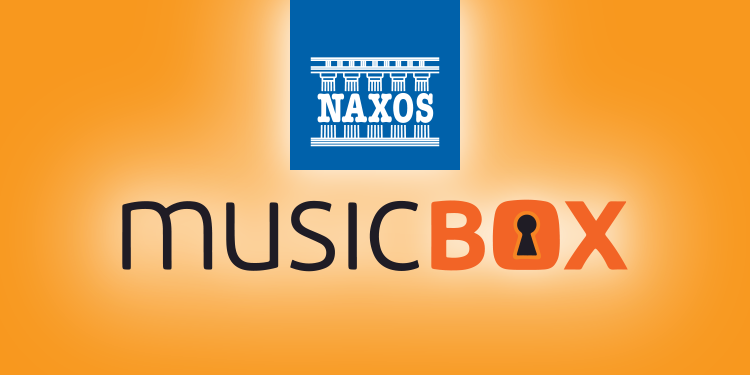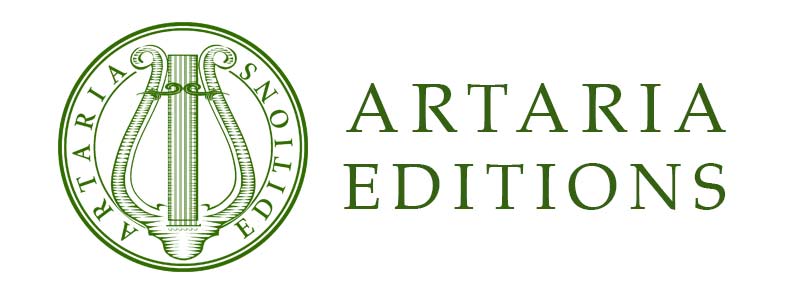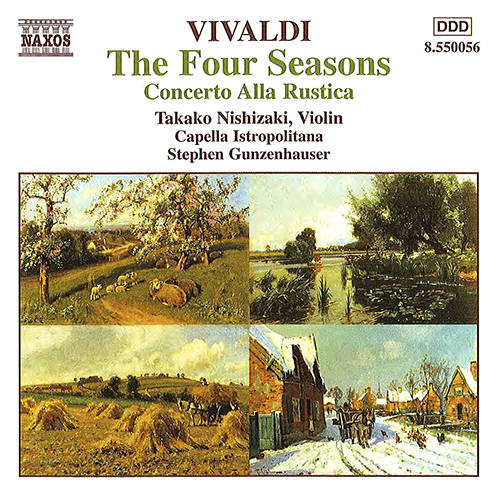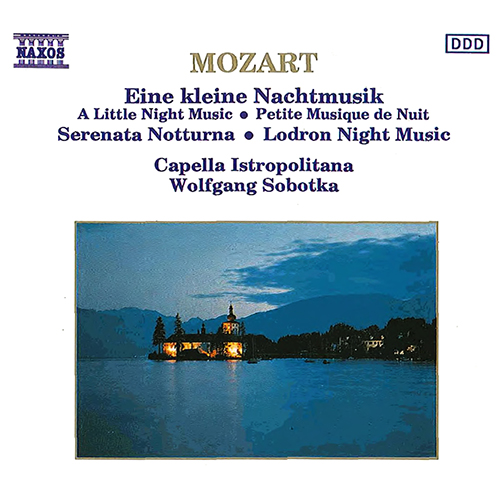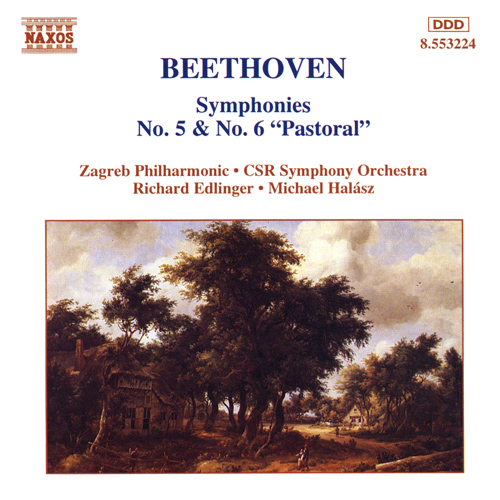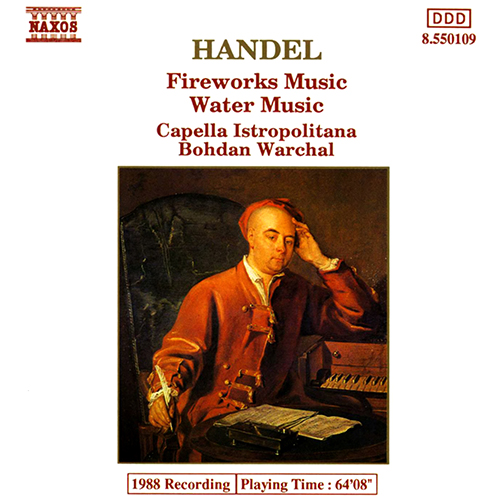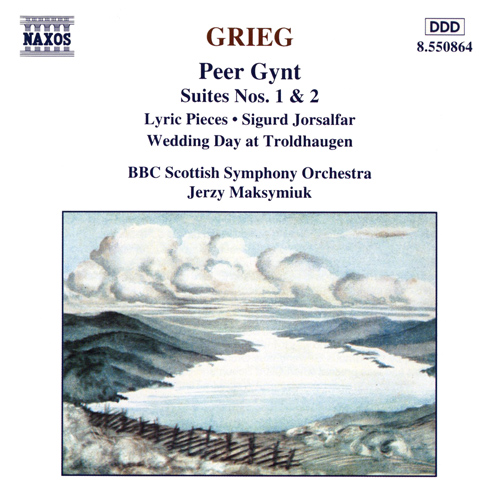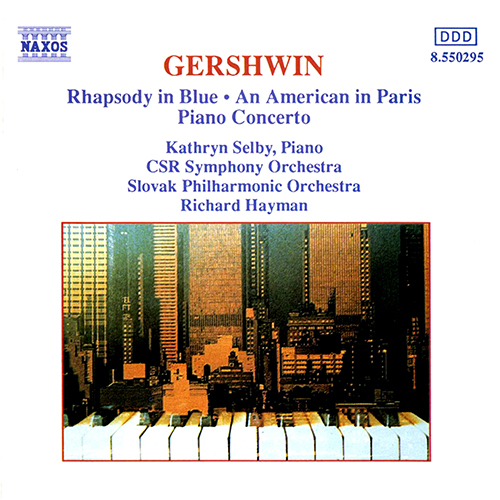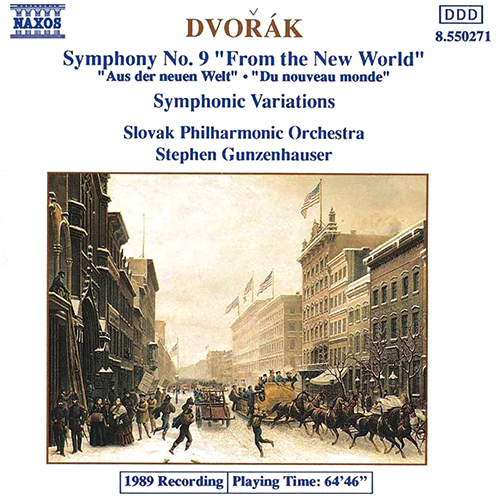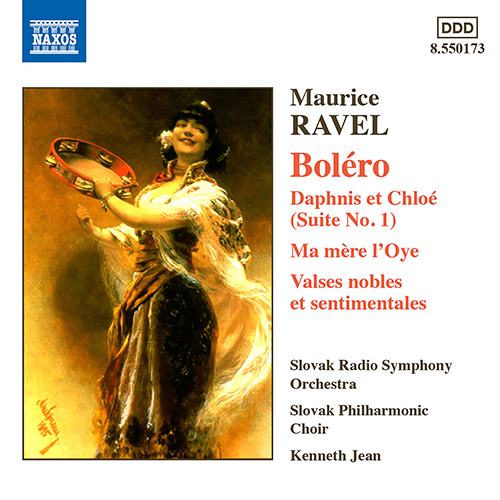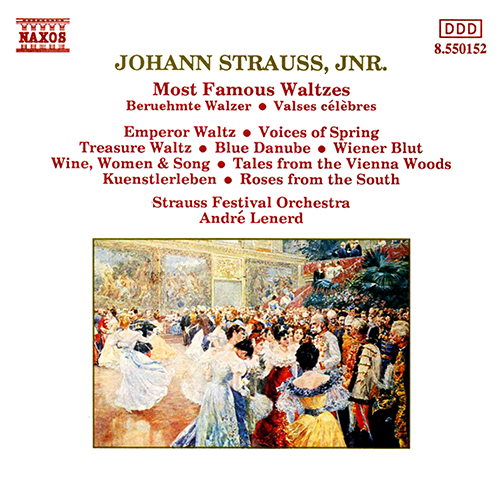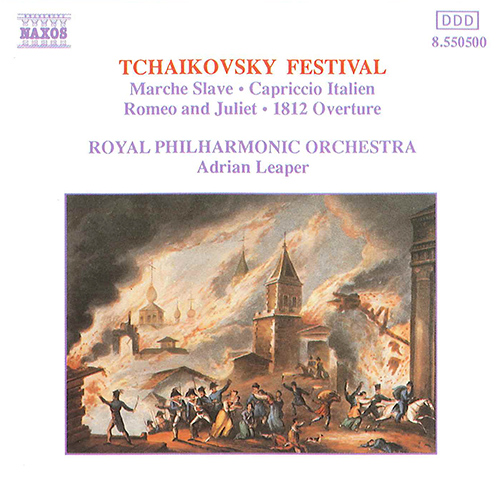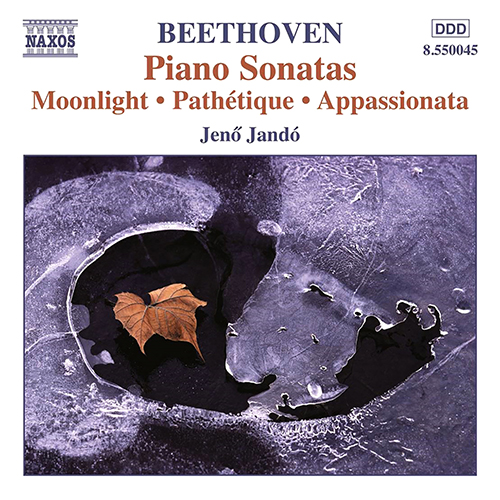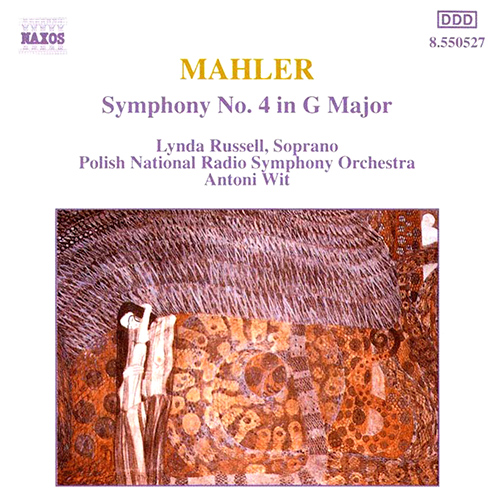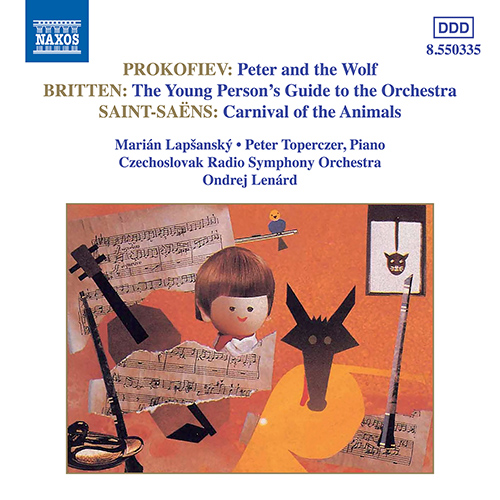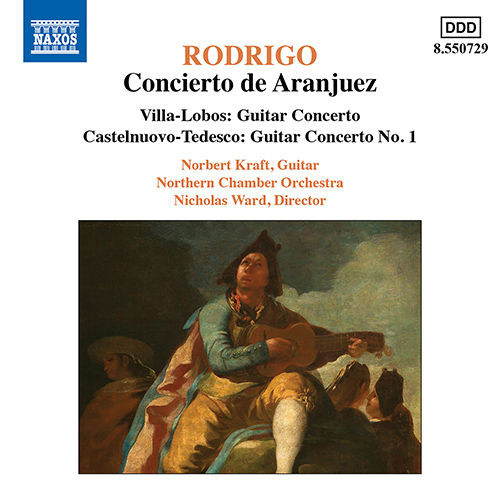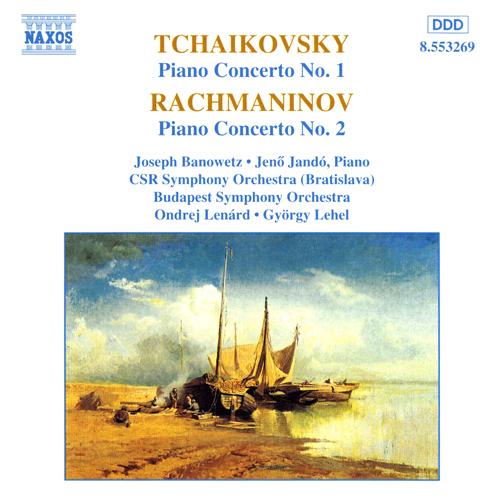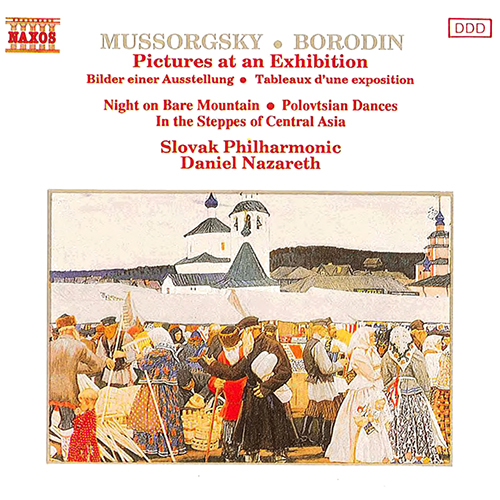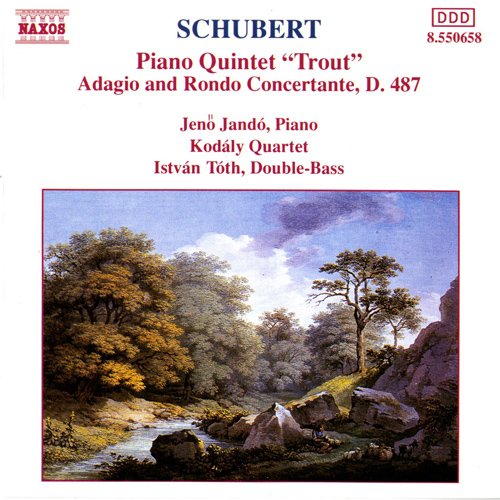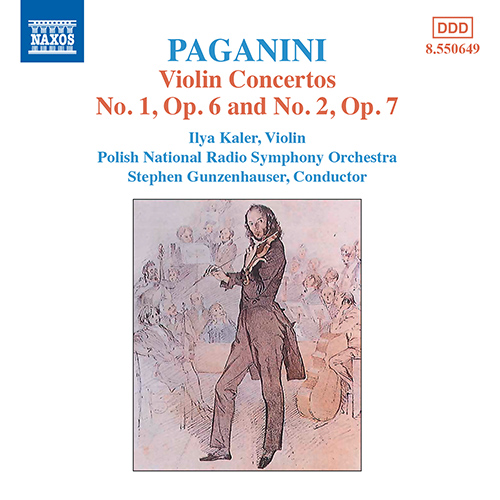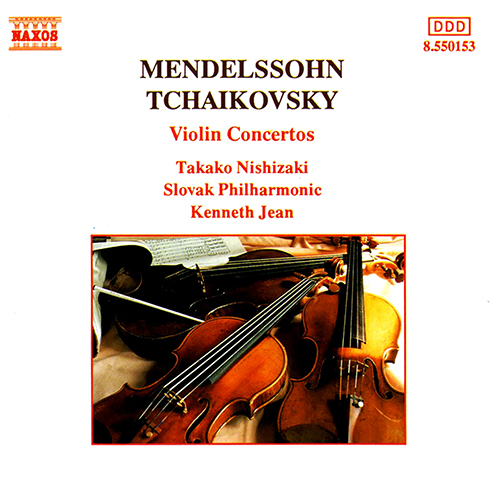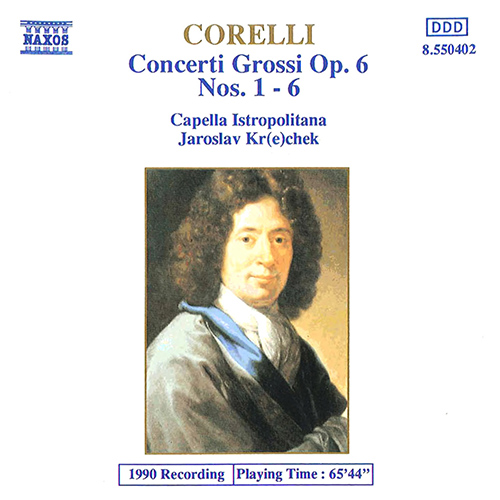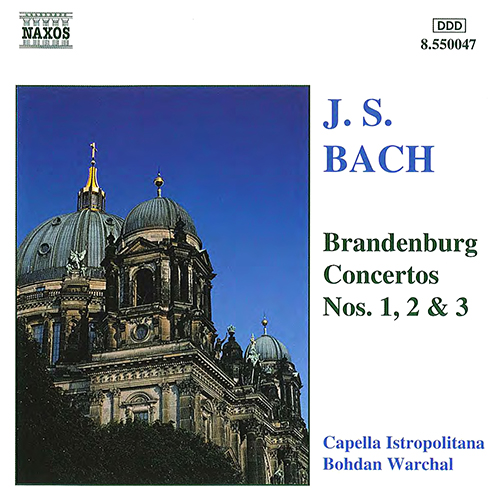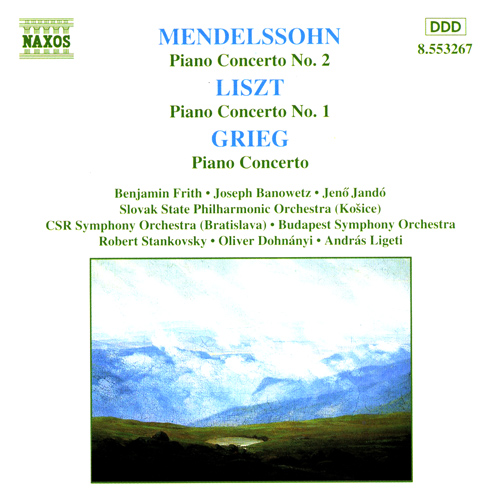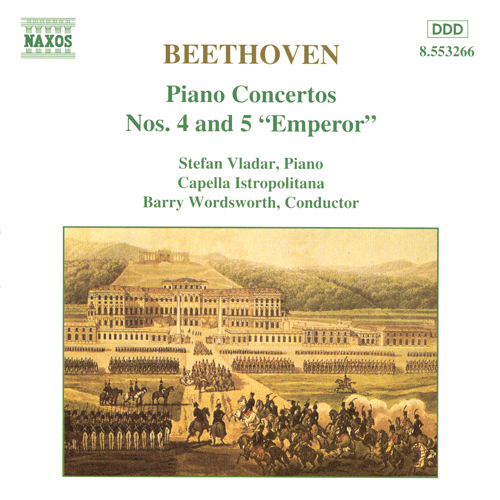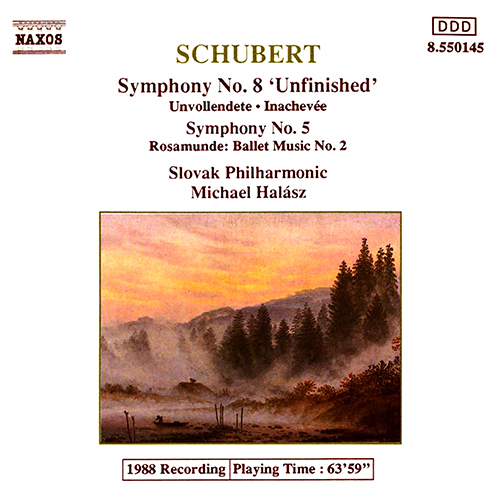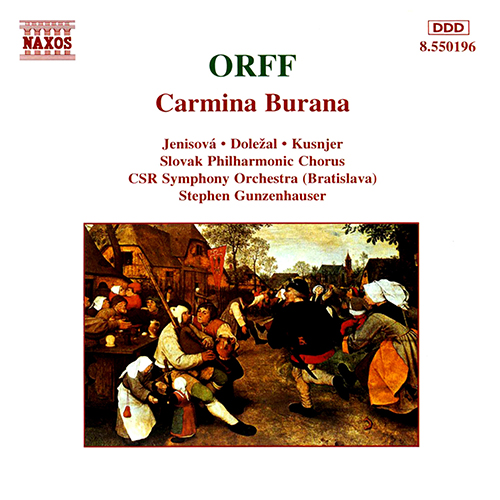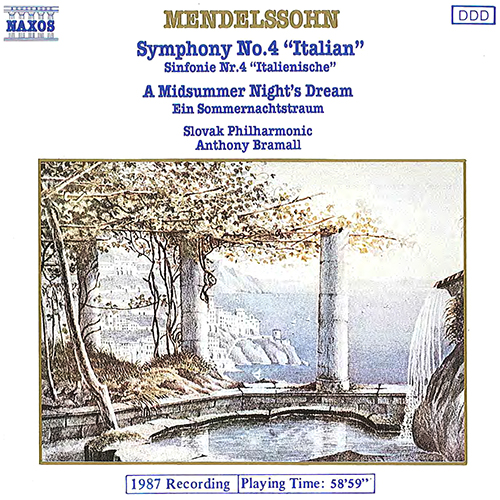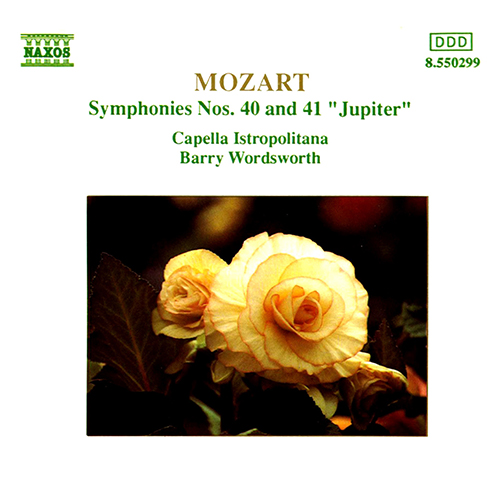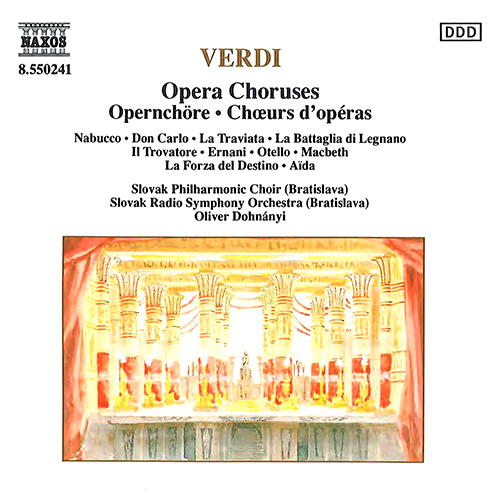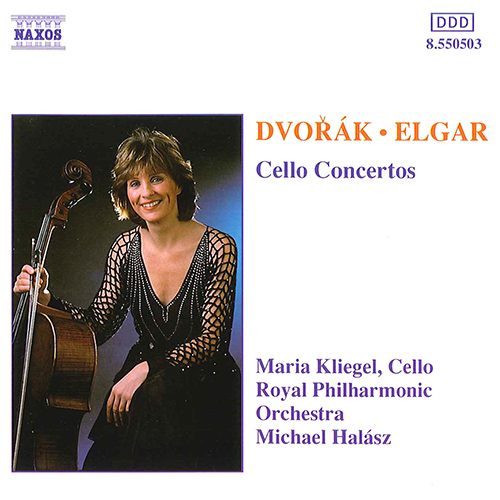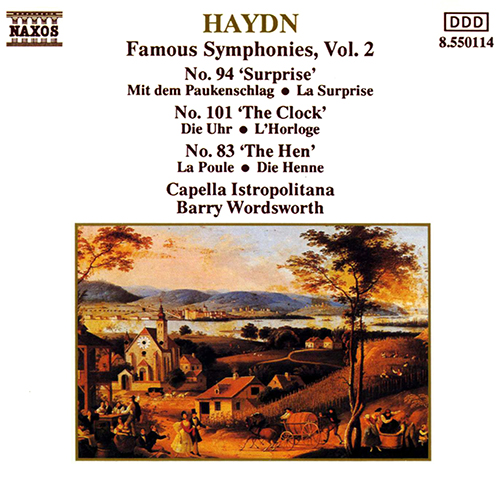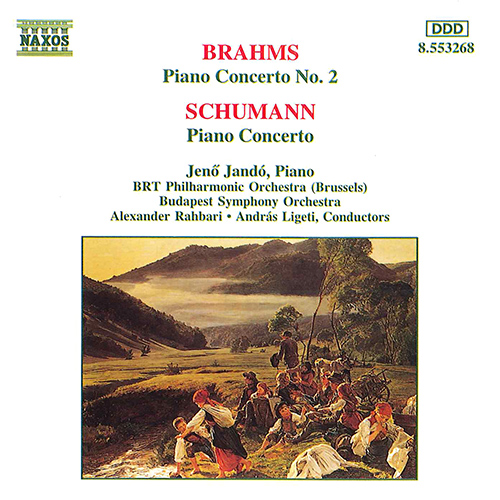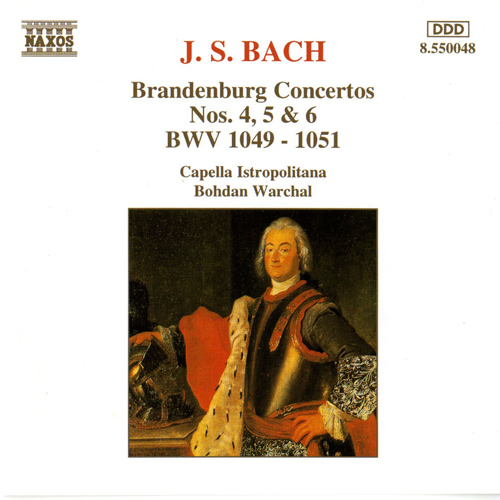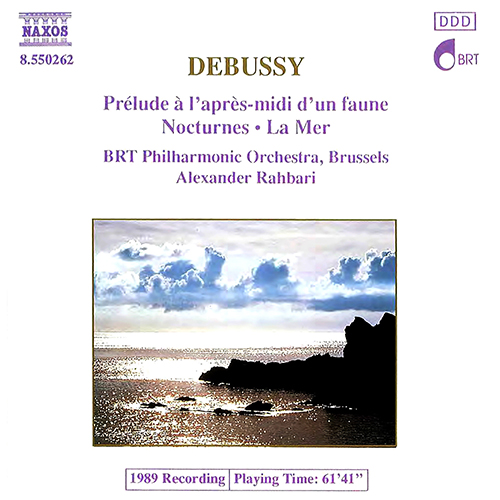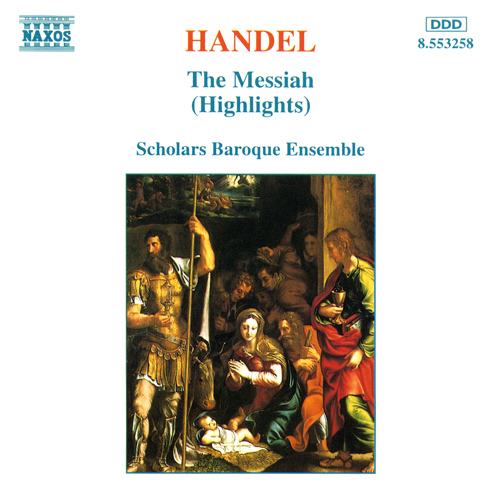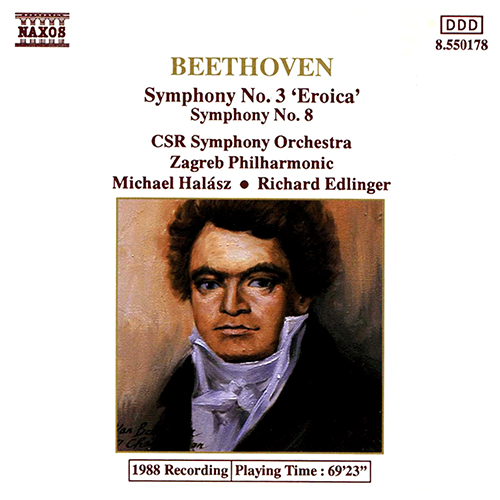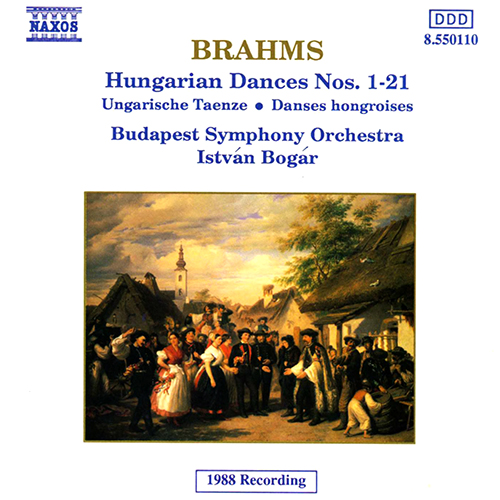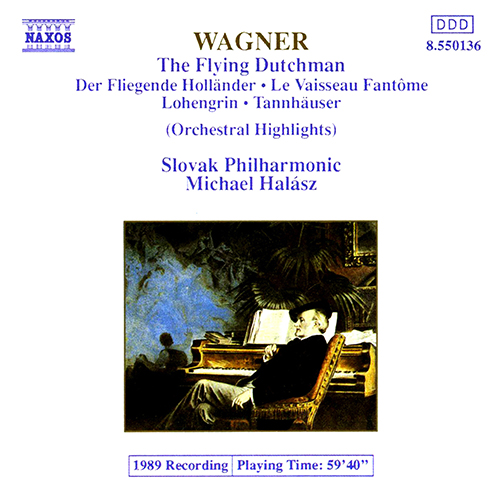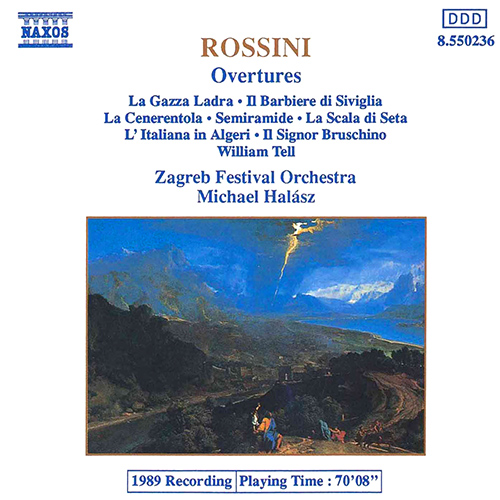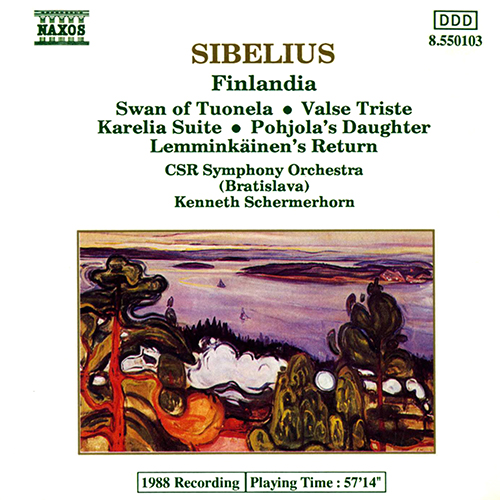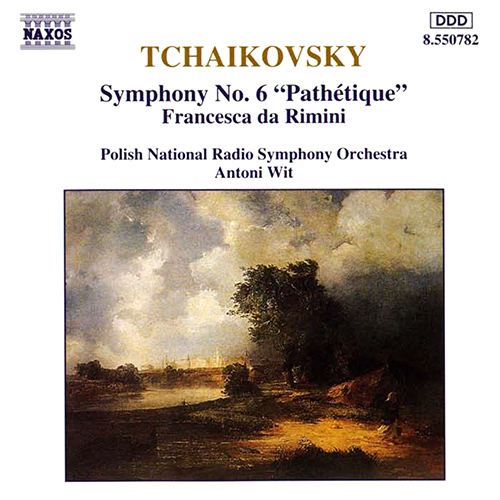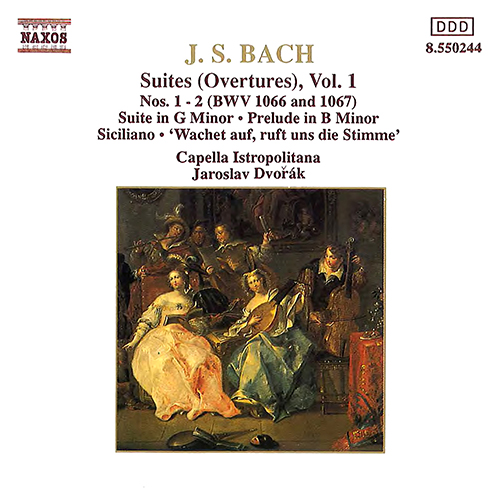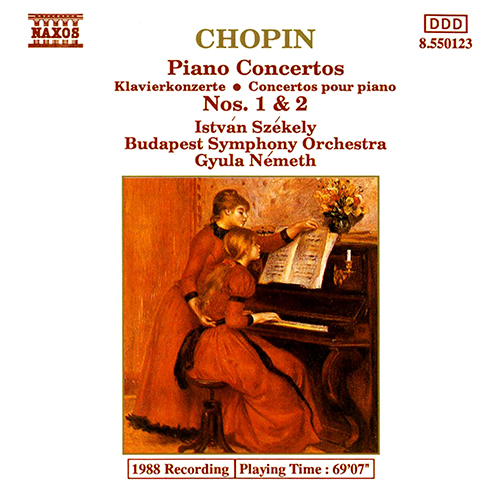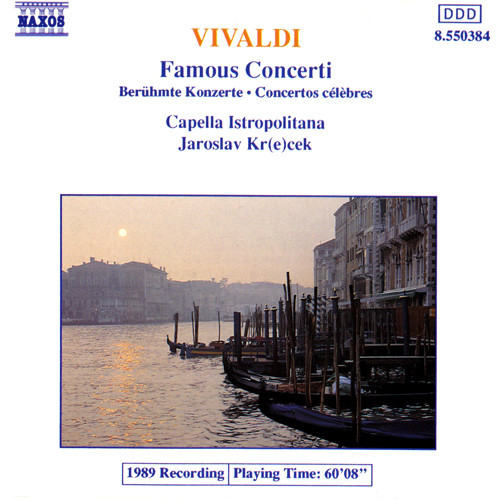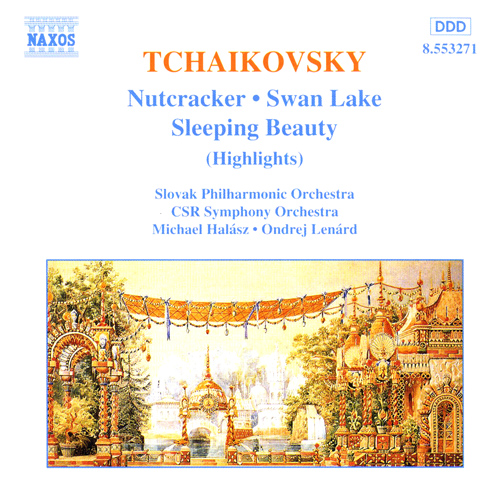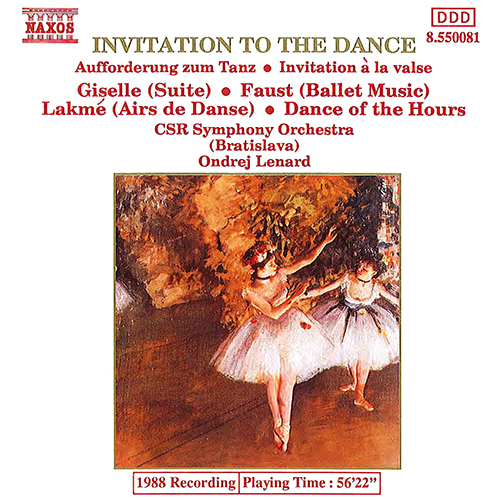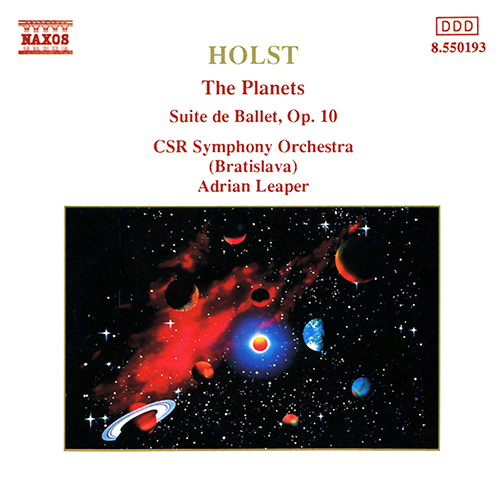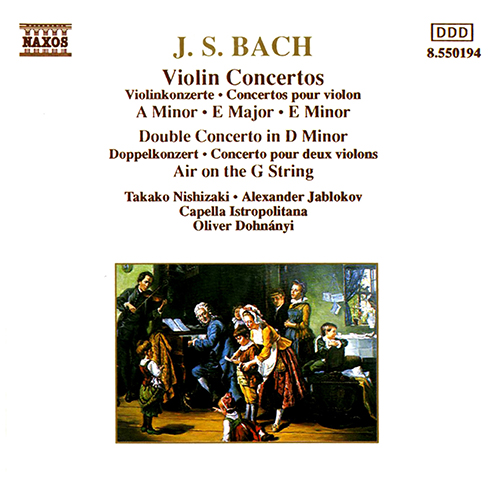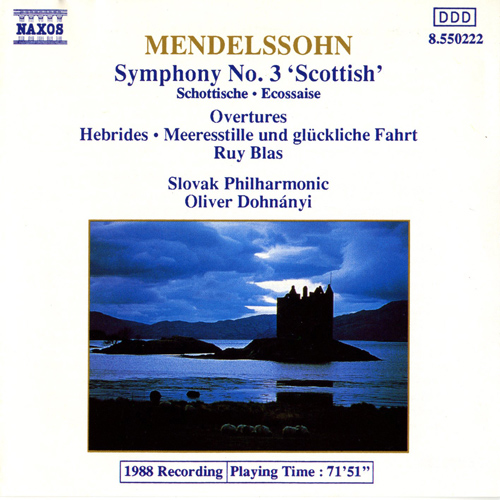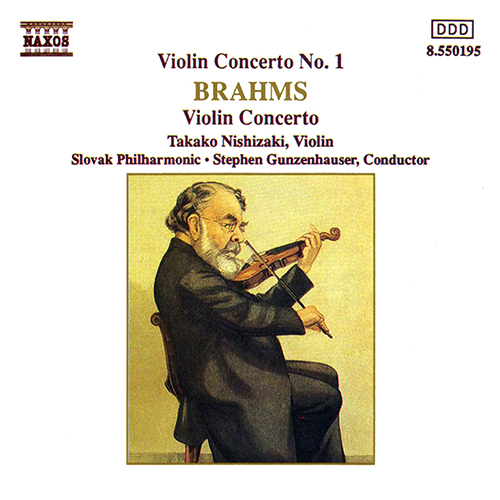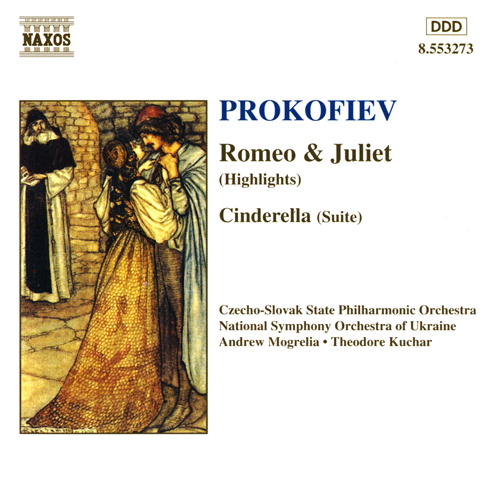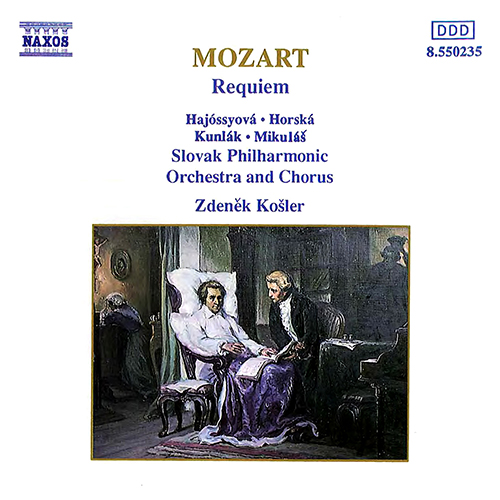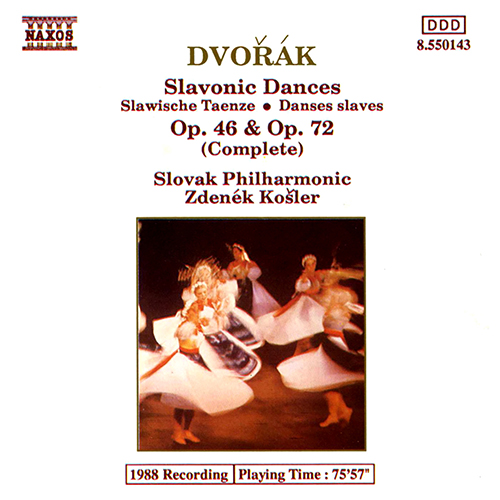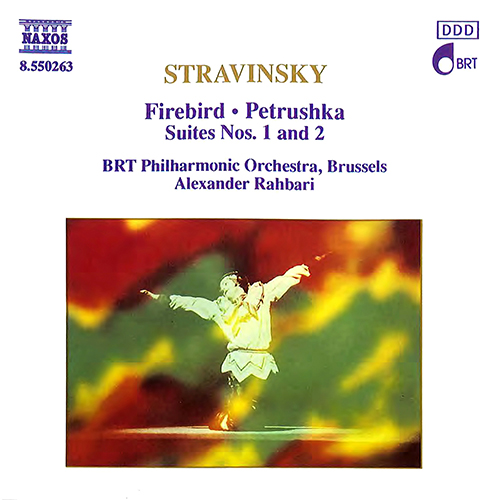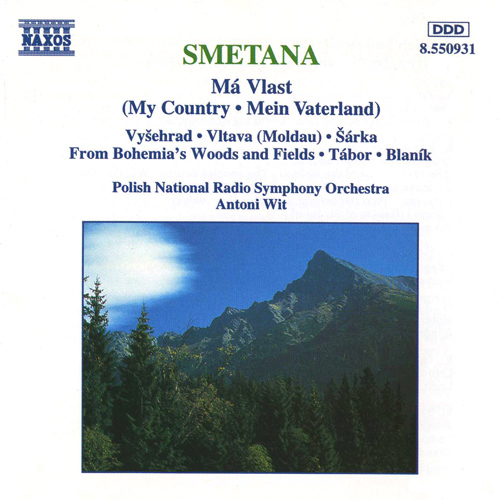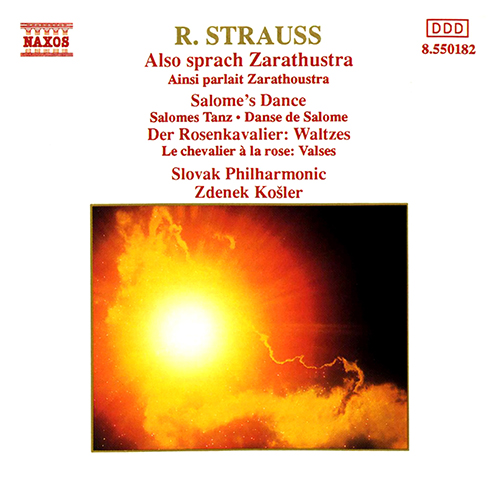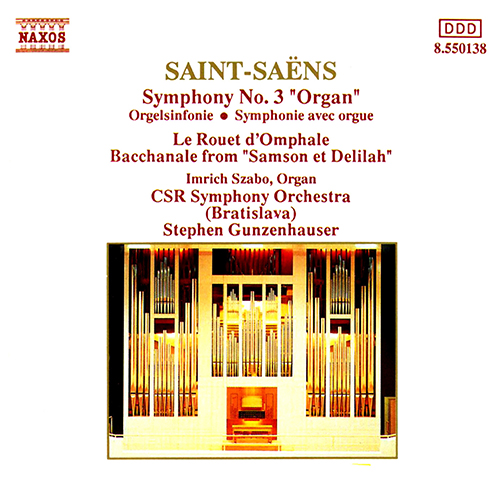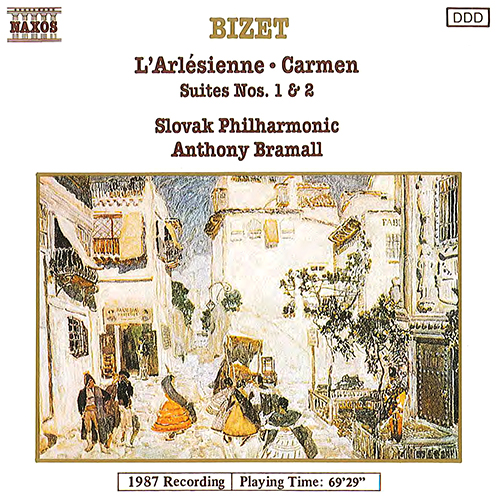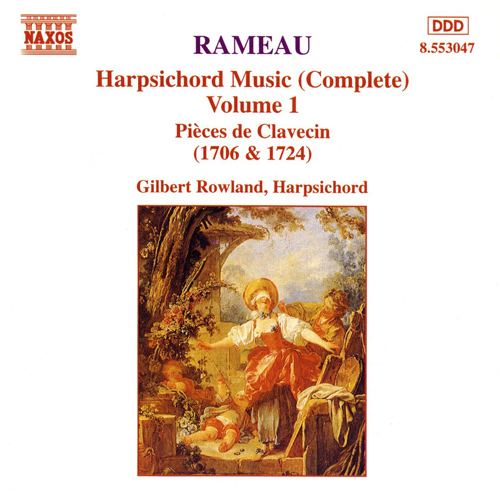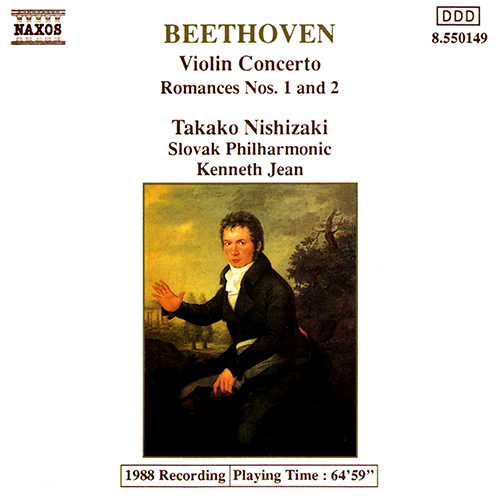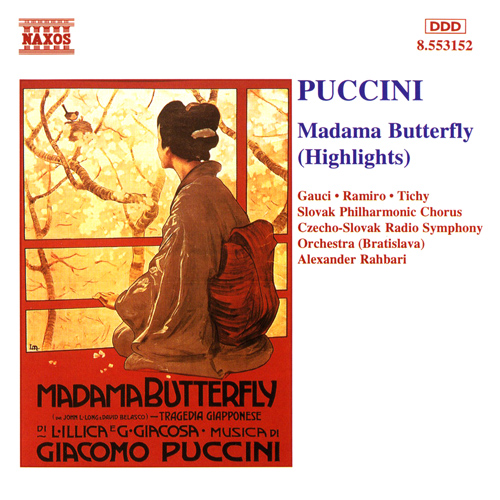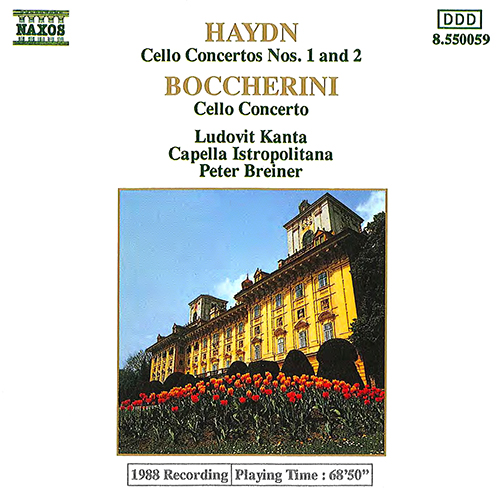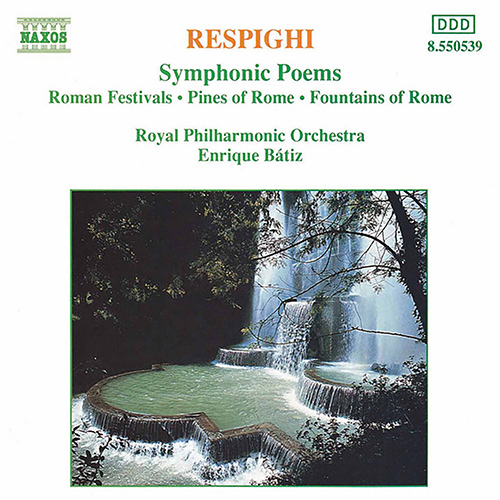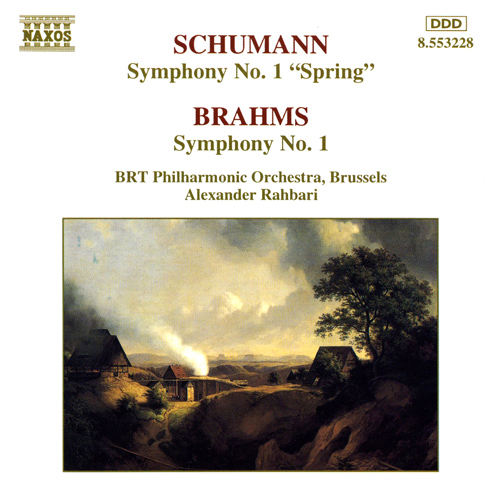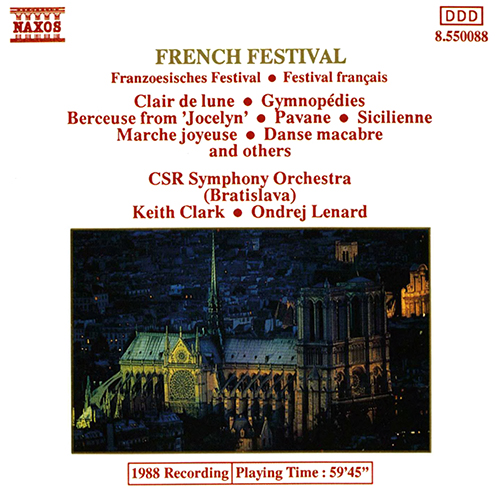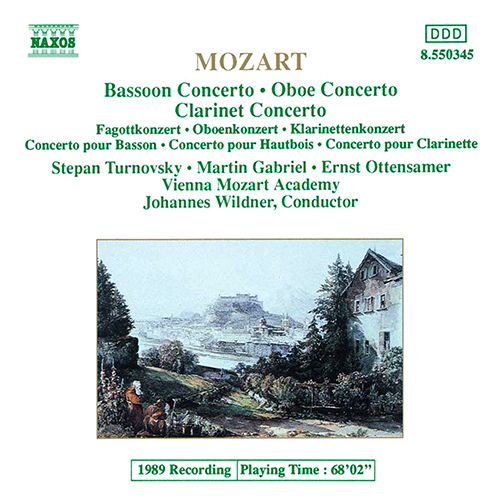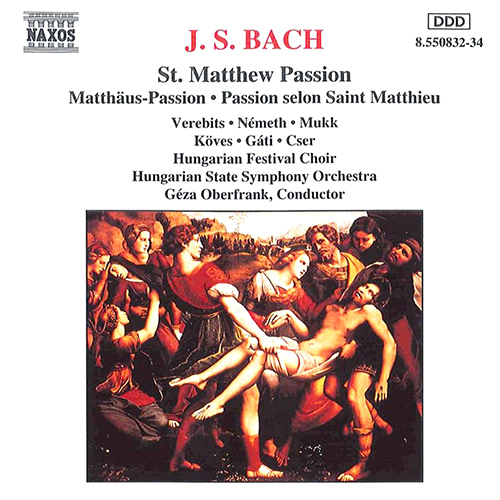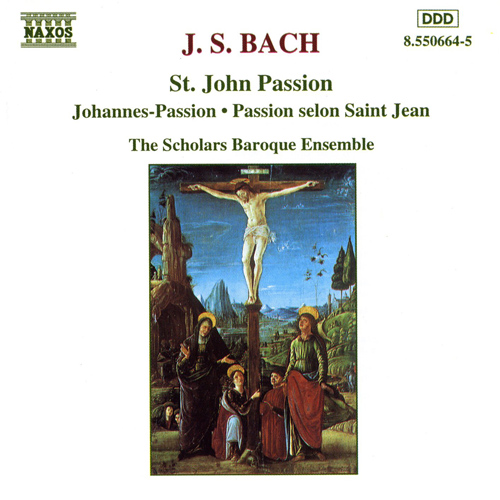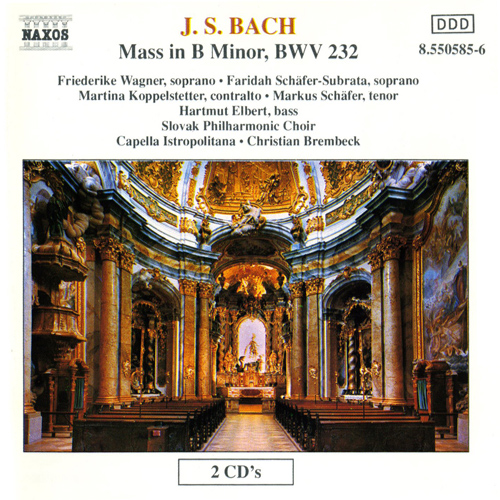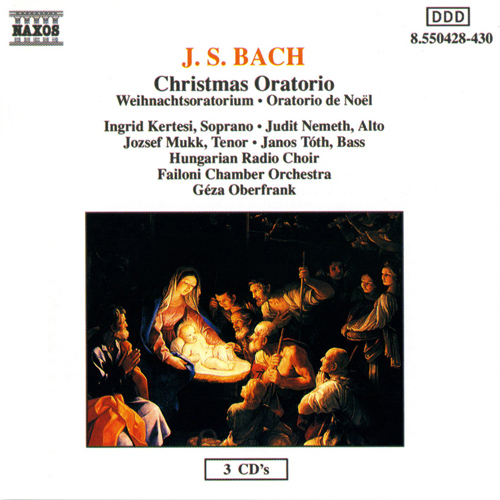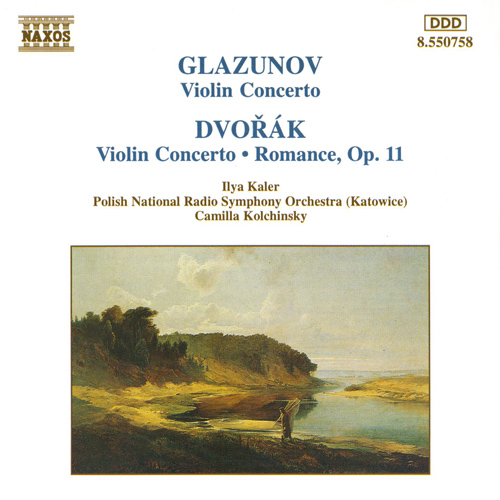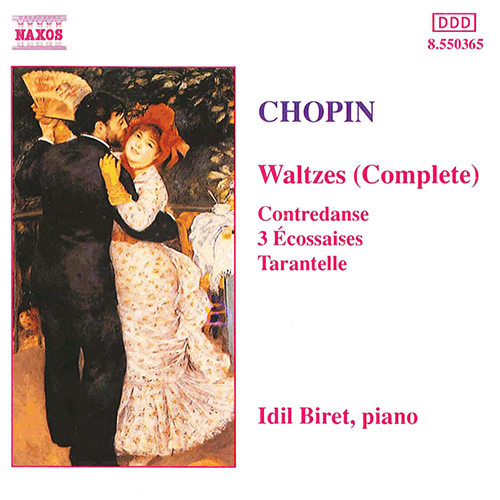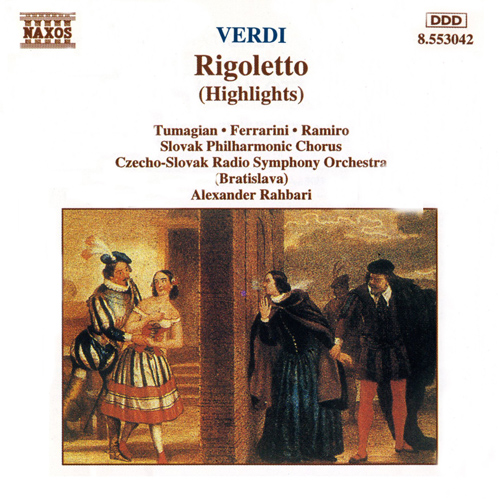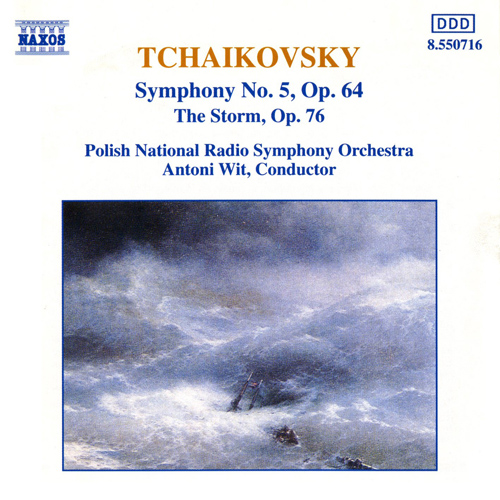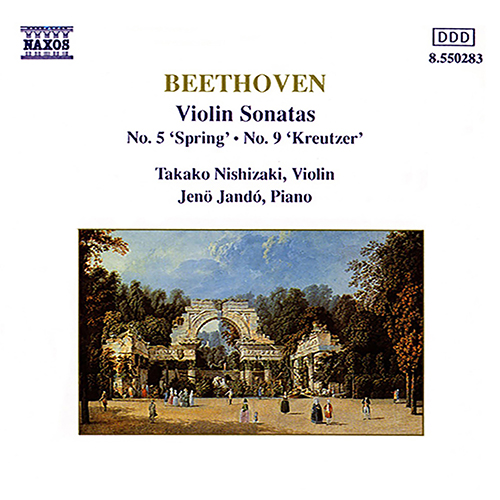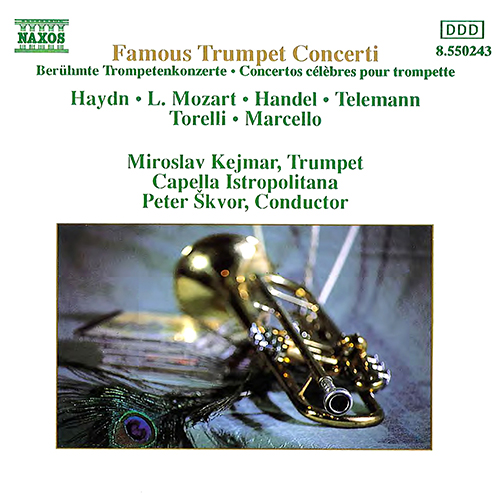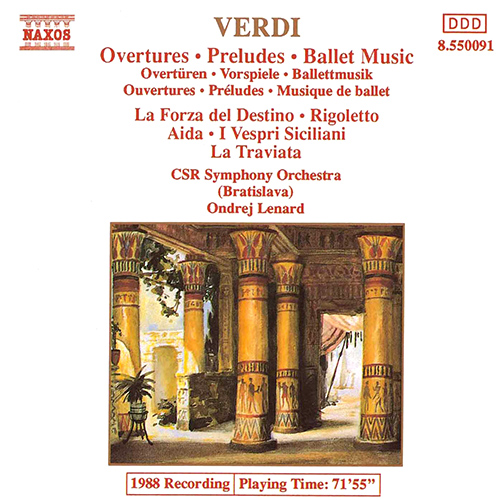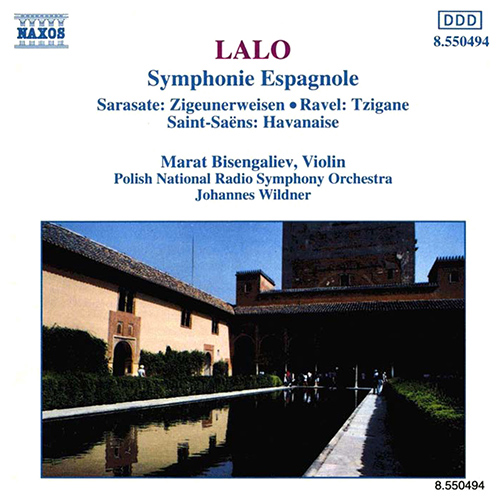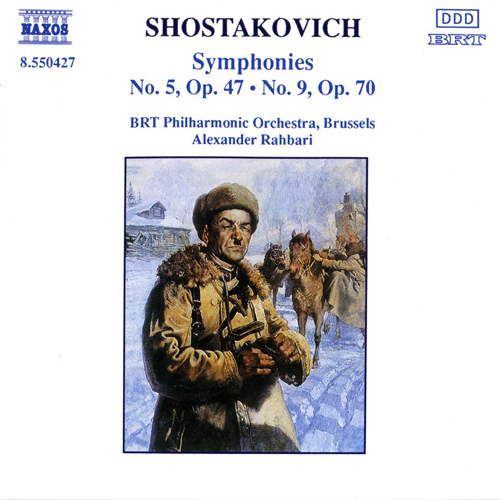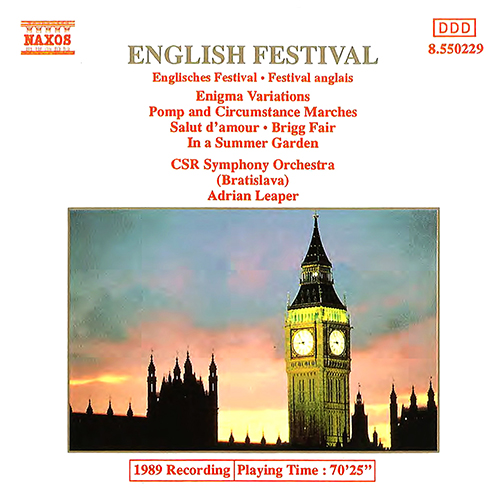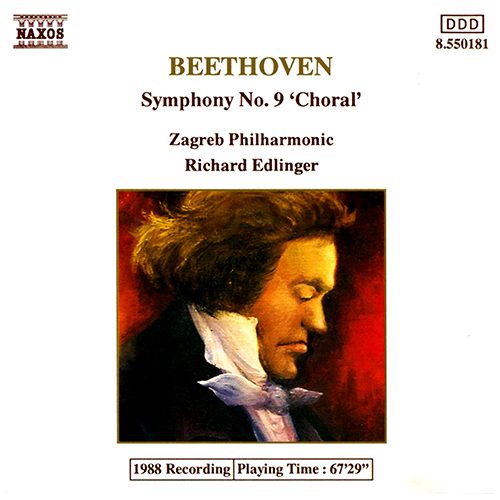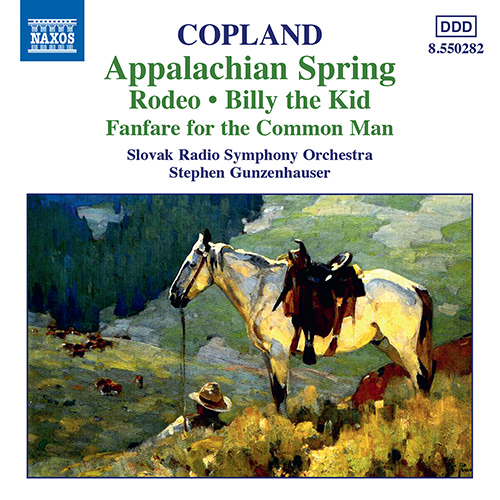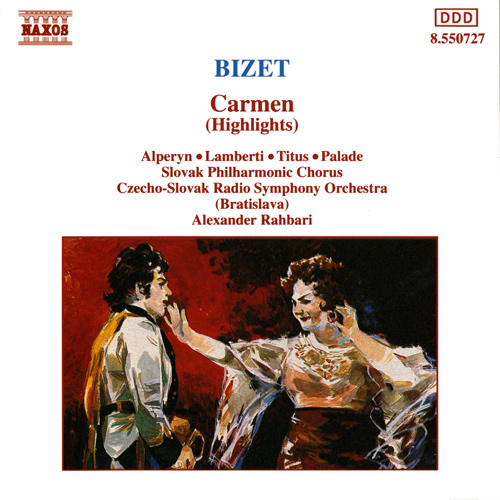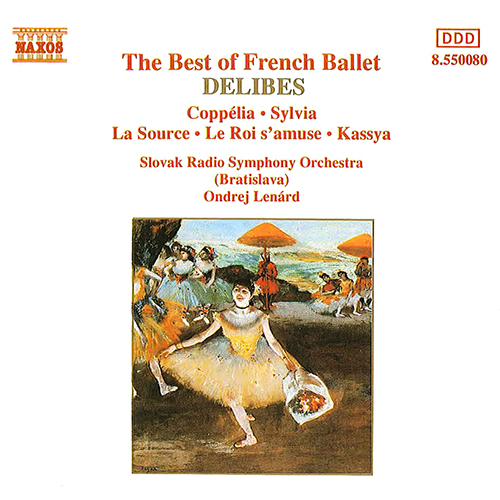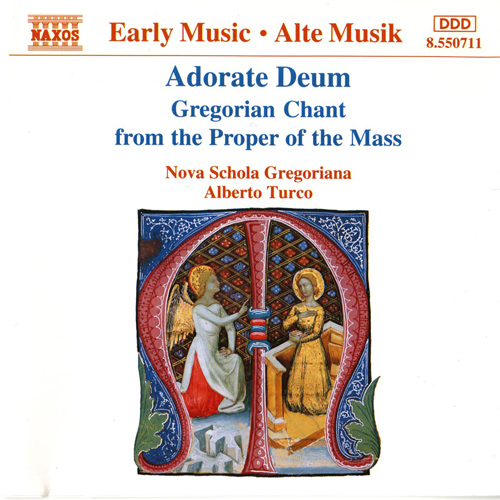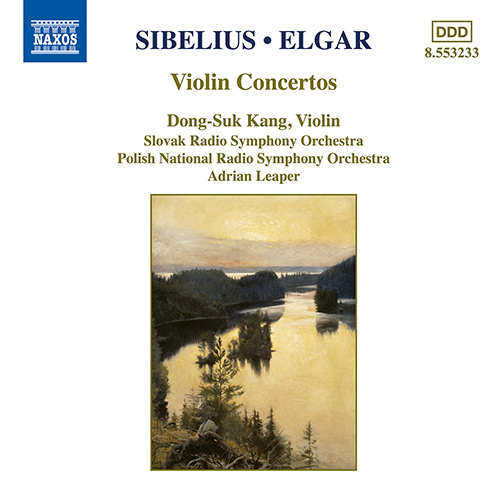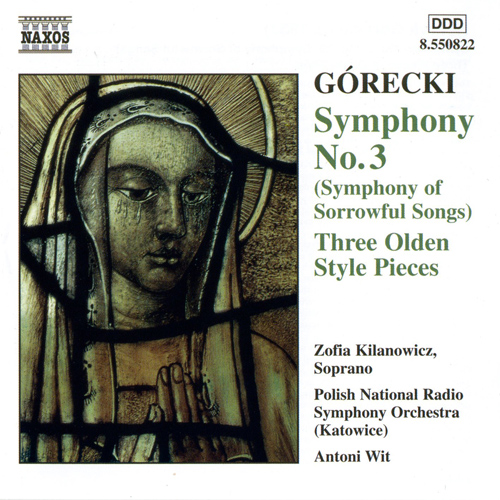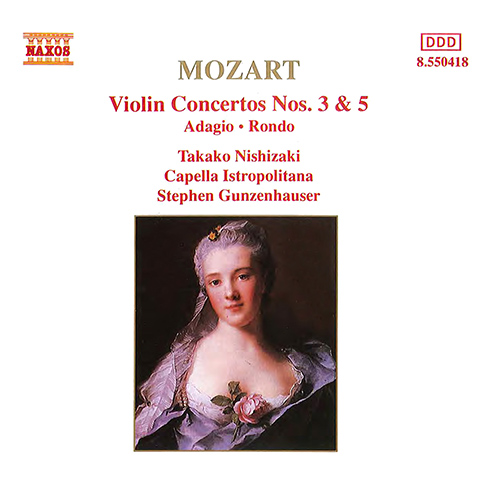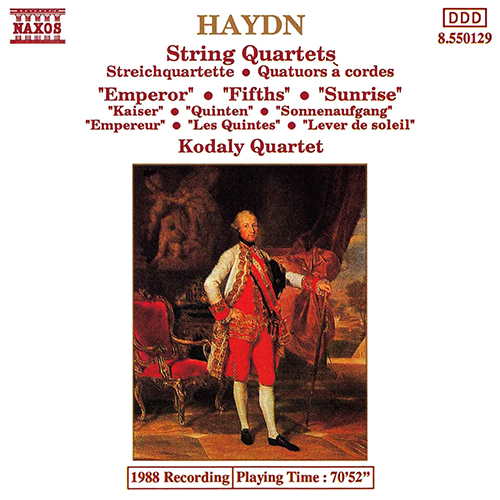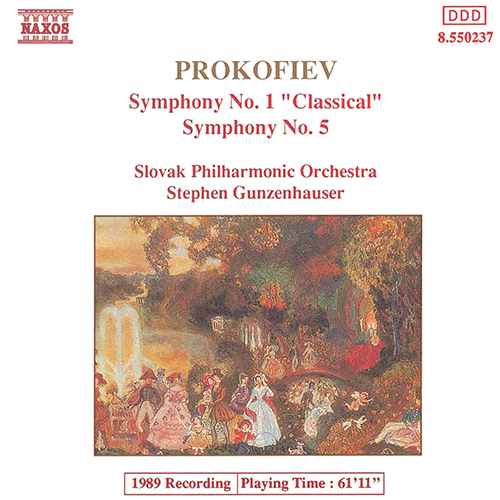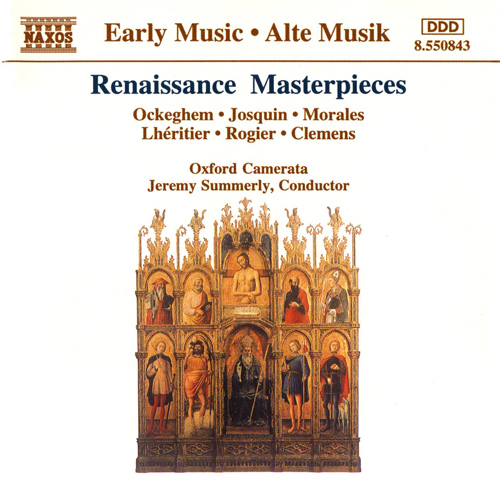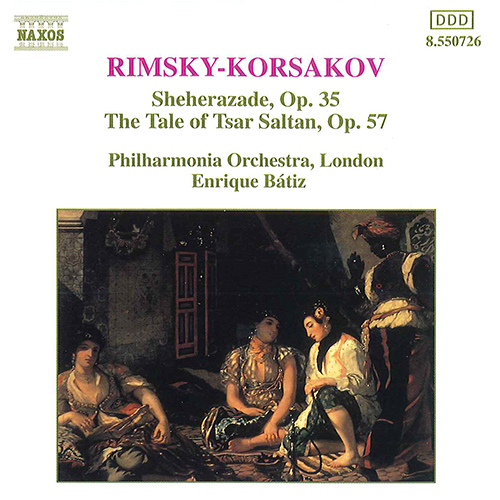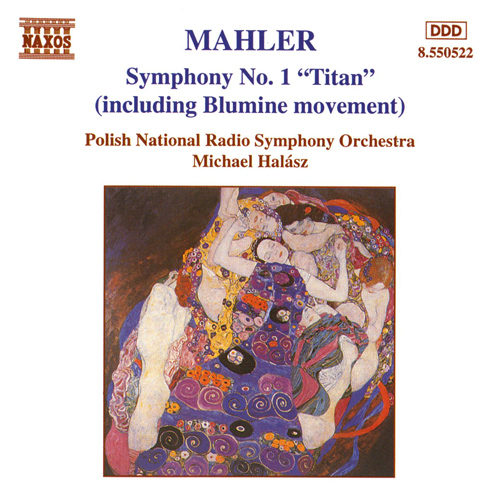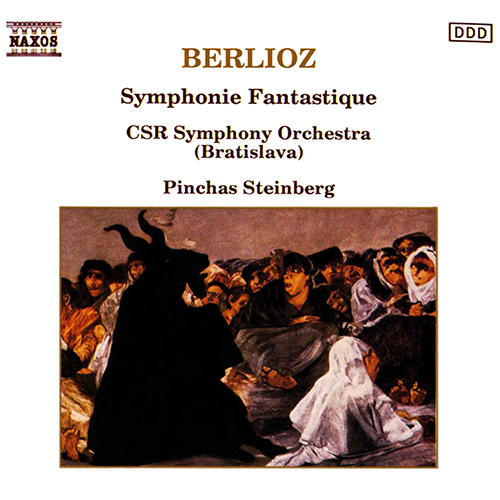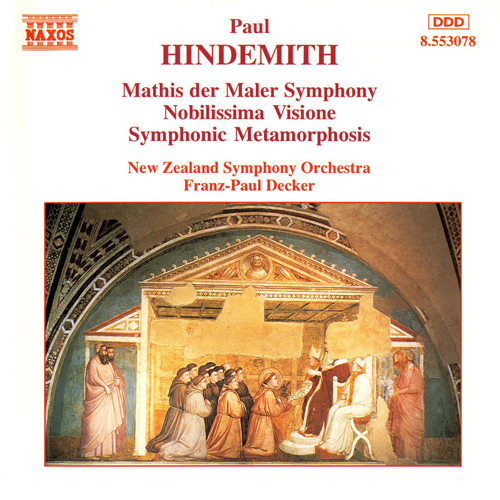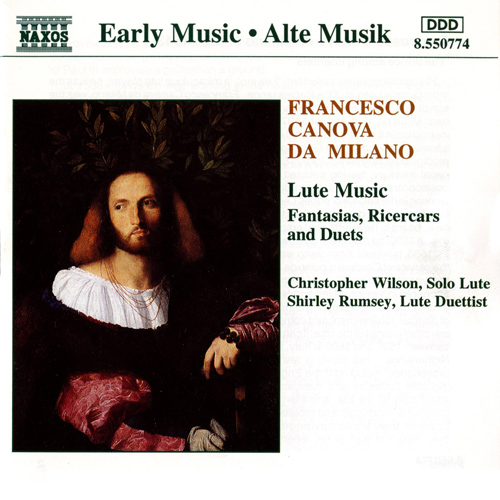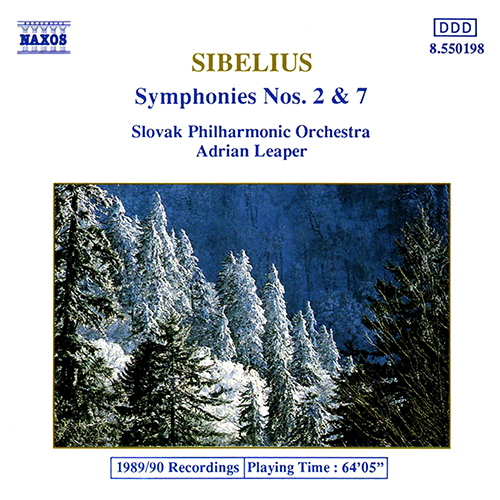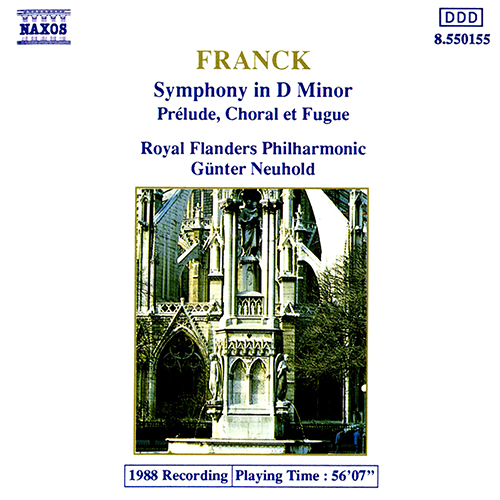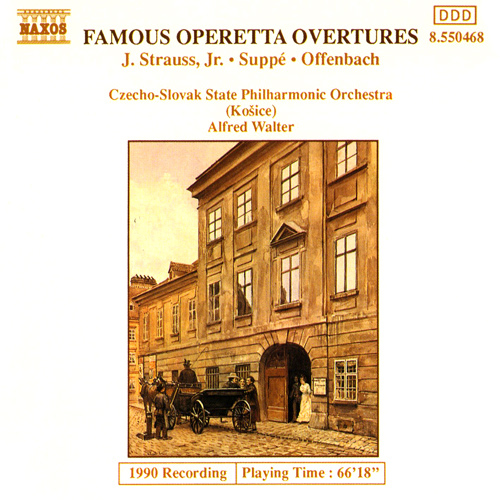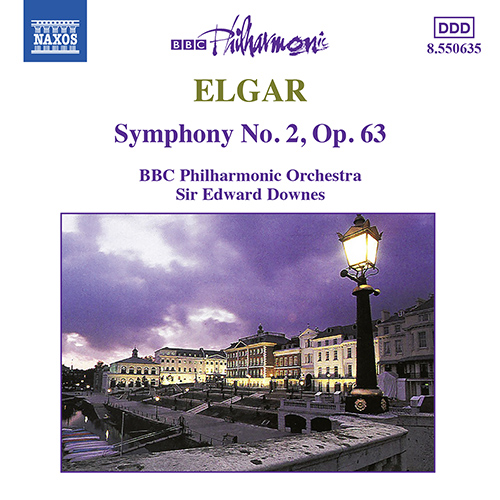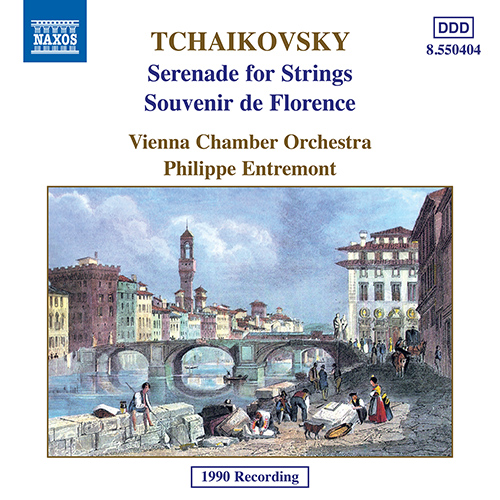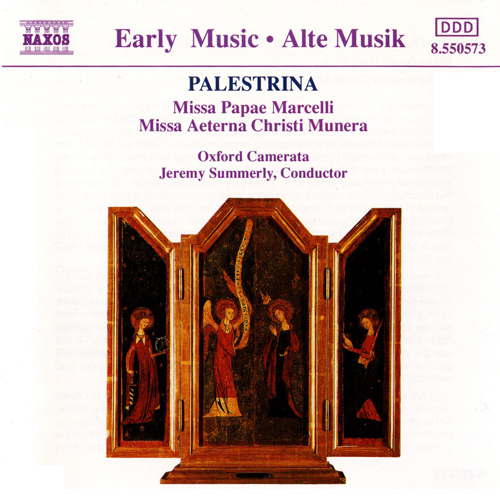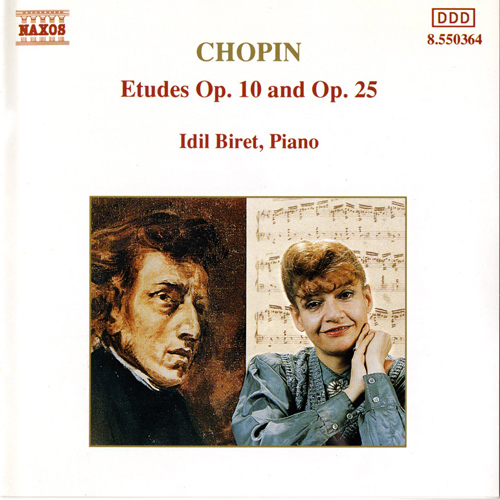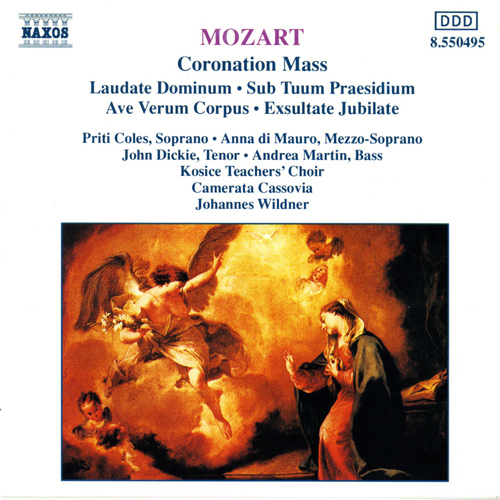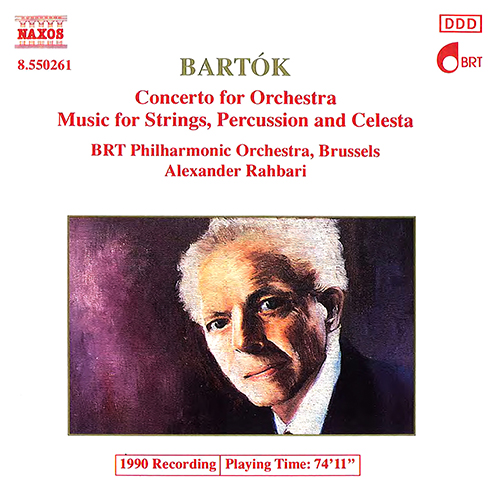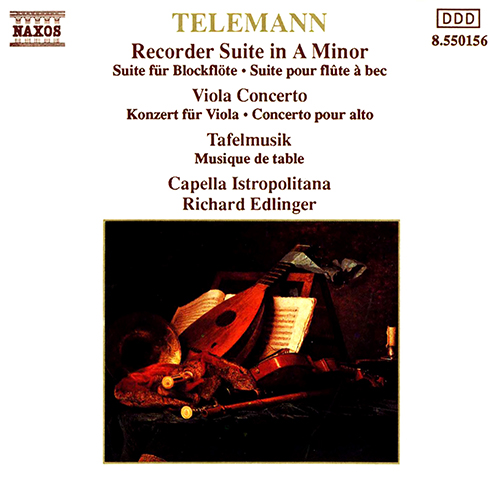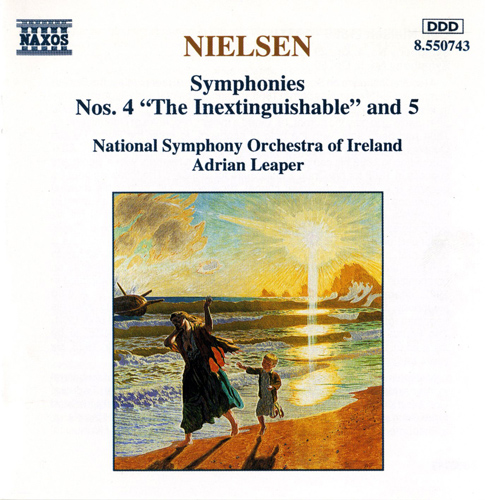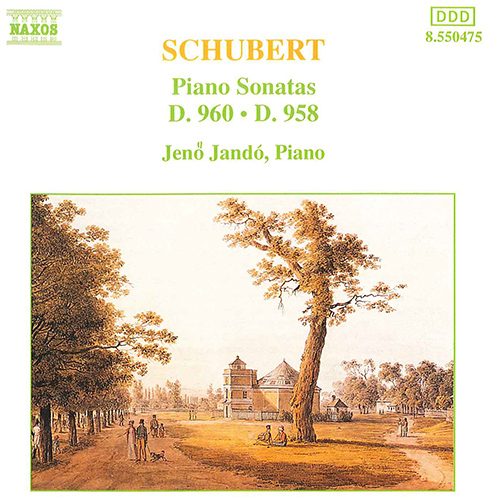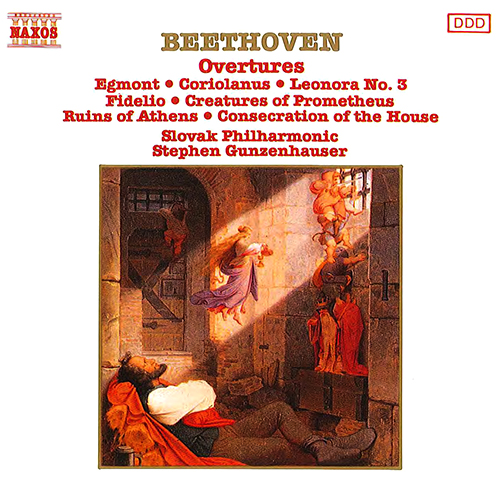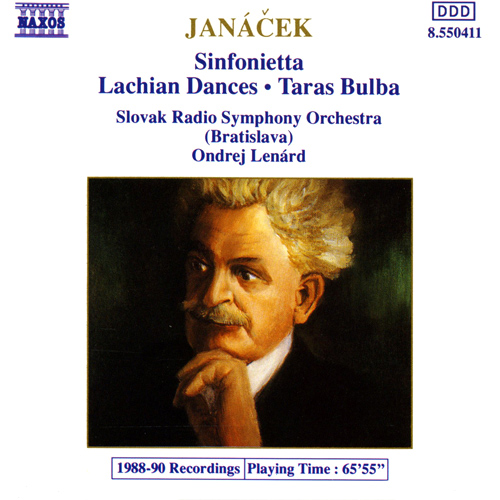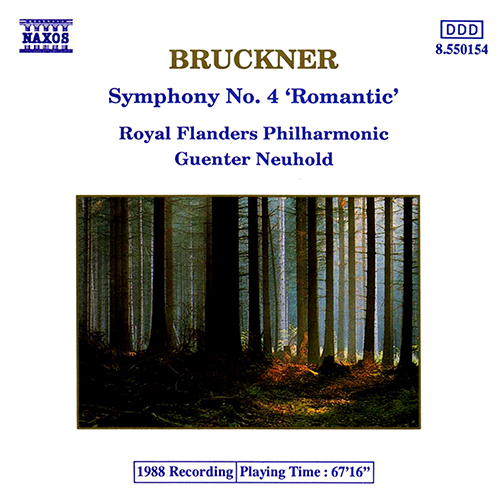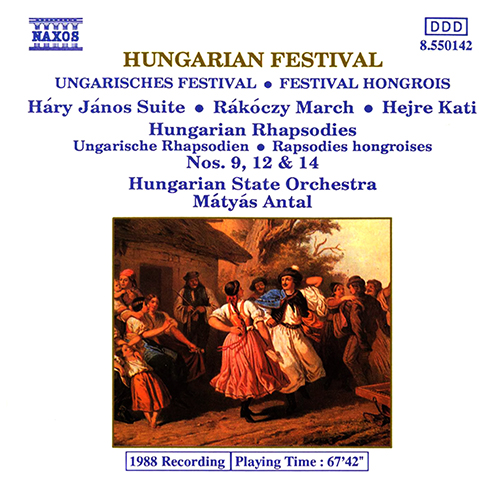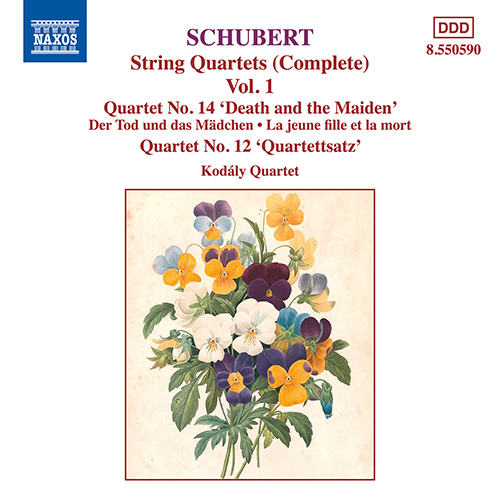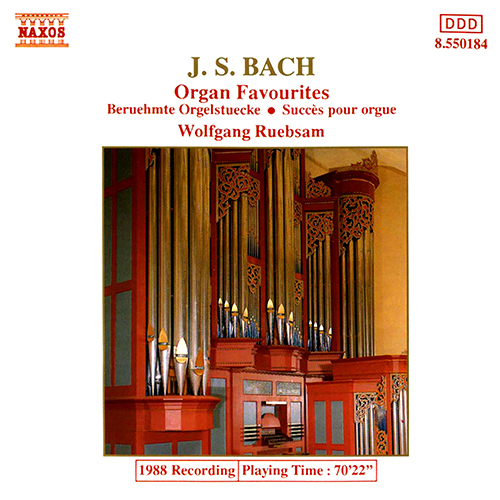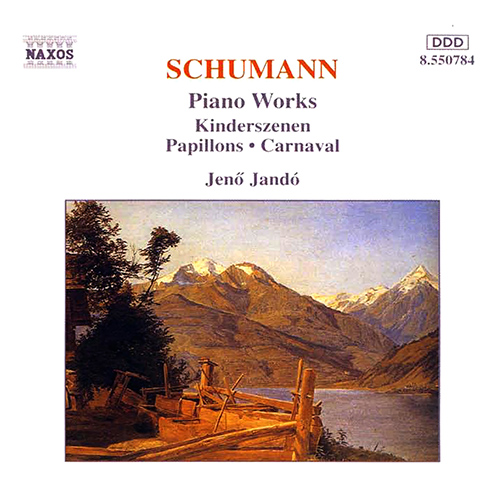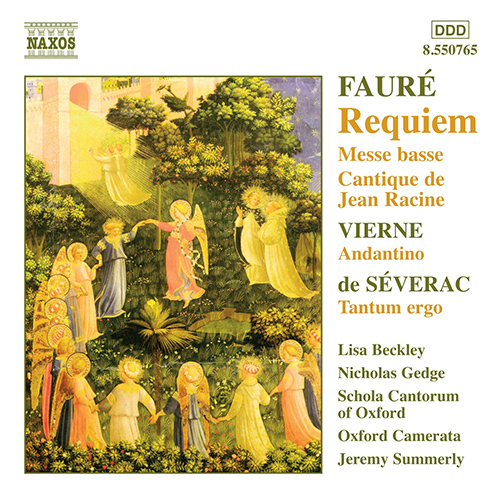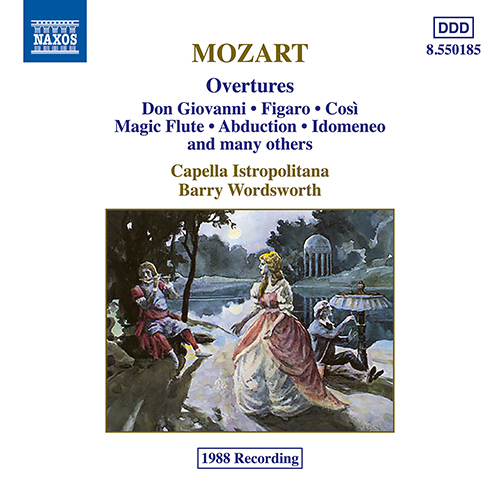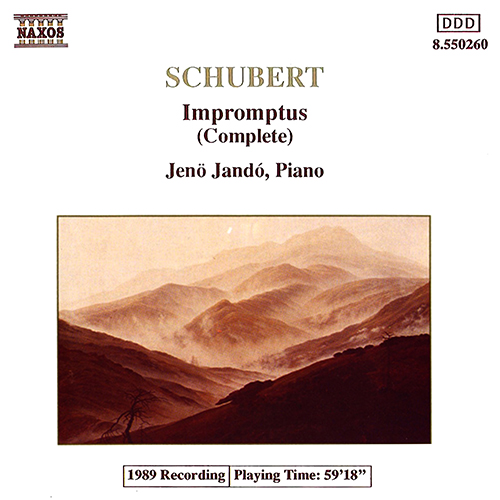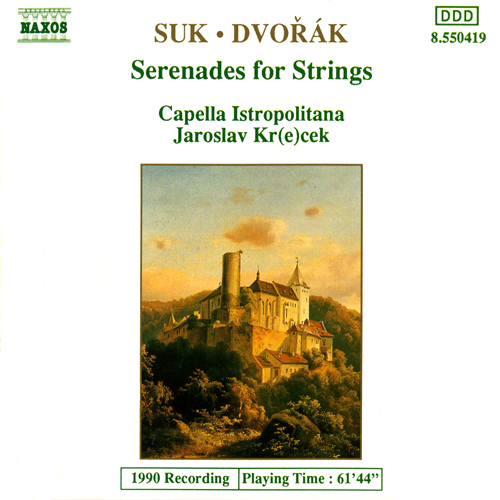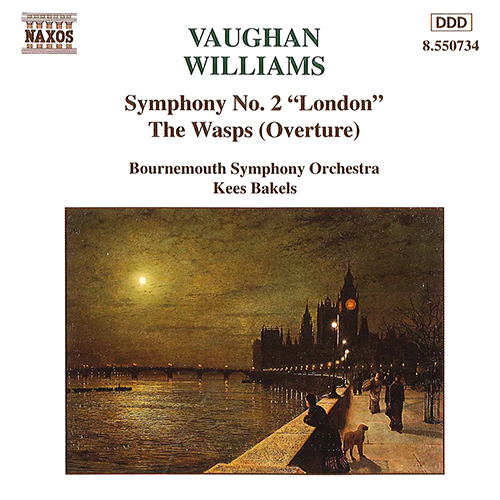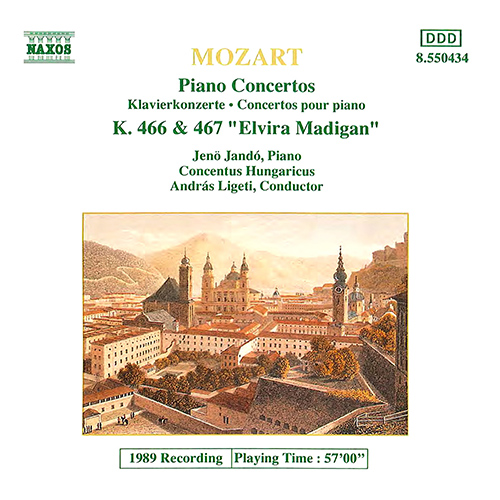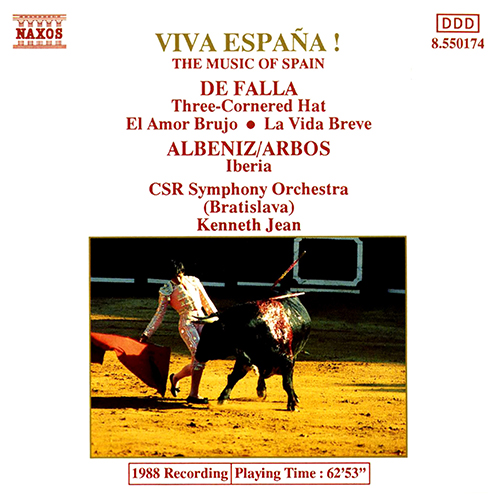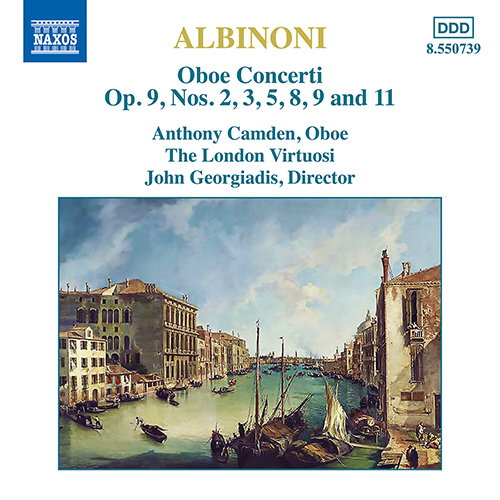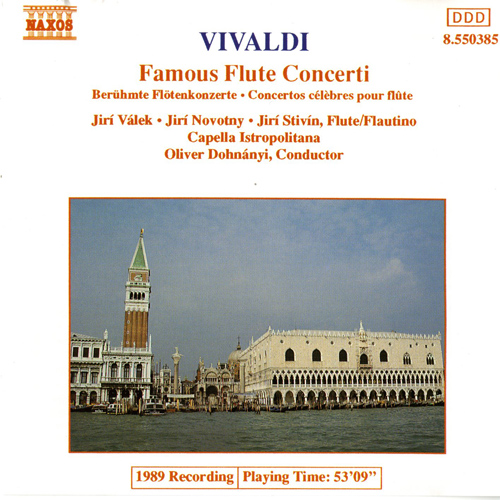Building a classical CD collection is a matter of increasing difficulty. Tastes in music widen, releases of recordings multiply, and the problem remains of where and how to start. Obviously one way to tackle the matter is to start by buying recordings of music that you know and like, if you know what you like and like what you know. The millionaire’s way out might be to buy all that is available on compact disc. The moderately well-to-do might care to become Naxos enthusiasts, joining the body of collectors who now buy without question every Naxos CD that appears. For most of us, however, some sort of guide, however incomplete, takes some of the pain out of choosing. The story of the donkey caught between two equidistant piles of hay and therefore starving to death suggests that a rough guide of some kind to record-buying might be helpful.
In the following list, a basic collection is suggested. Someone who buys and enjoys the now very familiar Four Seasons of Vivaldi might care to explore a wider range. Naxos, in fact, is undertaking the mammoth task of recording all the concertos of Vivaldi, some five hundred in all, on 75 CDs. If that seems rather too much of a good thing, interesting batches of concertos have already appeared, including a release on four CDs of the complete Cello Concertos. These will reveal new riches. Mozart’s Eine kleine Nachtmusik (‘A Little Night-Music’) might lead to the 41 symphonies or the 27 piano concertos now available. A little Beethoven should lead logically to a great deal more. Some suggestions now appear for recordings of earlier music, Gregorian chant, and vocal and instrumental music of the Renaissance, the door to a particularly rich and varied musical world.
The present guide has obvious limitations and modest enough intentions. Given that one must start somewhere, suggestions are included of where one might begin, but this is only a start. Most of the recommendations included in the guide offer also a starting-point for further exploration.
1. VIVALDI: The Four Seasons and Concerto alla Rustica
There is a certain danger in dividing the history of music into periods. Dates have something arbitrary about them, particularly when it comes to cultural history. It is, however, convenient to distinguish a Baroque period in music, from about 1600 to about 1750. Nowadays music from this period enjoys enormous popularity and among the most popular works of all is Antonio Vivaldi’s The Four Seasons. Vivaldi, known as the Red Priest from the colour of his hair and his vocation, was born in 1678 in Venice, where he spent the greater part of his life. He was employed as a violin-teacher and then as director of instrumental music at a girls’ orphanage, the Ospedale della Pietà, well known for the high standard of its musical performances. Among his 500 or so concertos, a phenomenal output even by the standards of his own time, The Four Seasons have always proved the most popular, a set of four concertos for solo violin, strings and harpsichord. Vivaldi added to the published score a series of poems that offer a narrative outline for the characteristic events of each season. In Spring the birds sing, until their song is interrupted by a thunder-storm, a goat-herd sleeps, while his flock grazes and his faithful dog does his work for him, barking at regular intervals. Spring ends with a shepherd dance. Sultry Summer, Autumn with its cheerful hunting-parties and icy Winter follow a similar pattern, the last contrasting the cold outside with the warmth to be found inside, by the fireside. If The Four Seasons already sounds familiar, it might be because advertisers have found there an inexhaustible mine of music to accompany the advertisement of luxury products. The music has, in fact, an elegance and clarity about it, breathing the spirit of the early 18th century in that most elegant and beautiful of cities, Venice. The Four Seasons and the pastoral Concerto alla Rustica, also included on the recommended disc, offer attractive music at any level, easy listening, or an object of deeper exploration.
Recommended recording
8.550056
Takako Nishizaki • Capella Istropolitana • Gunzenhauser
2. MOZART: Eine Kleine Nachtmusik • Serenata Notturna
Mozart nowadays is among the best loved classical composers. Peter Shaffer’s play and film Amadeus advertised Mozart, while misrepresenting him. Yet now the peculiar beauty and poignancy, joy mingled with passing sorrow, that Mozart embodies, and the vanished and ordered world that his music reconjures for us, all add to the admiration that he is accorded.
Eine kleine Nachtmusik (‘A Little Night Music’)—a Serenade written in Vienna in 1787, shortly after the death of the composer’s father—was intended for evening entertainment. The first of its attractive four movements briskly leads to a Romance, a Minuet and a lively final movement. It is written for string instruments only—violins, viola, cello and double bass—and offers in miniature an example of that predominant form of the time, the symphony. Our selected recording is coupled with a more extended Serenade, the Serenata Notturna (‘Night Serenade’), written ten years earlier for the entertainment of the Mozarts’ well-to-do friends in Salzburg, as was the so-called Lodron Night Music, the accompaniment to a party in the house of a leading member of the local nobility, among whom the Mozarts were welcome enough as guests.
Recommended recording
8.550026
Capella Istropolitana • Sobotka
3. BEETHOVEN: Symphony No. 5 and Symphony No. 6, ‘Pastoral’
The classical symphony is the characteristic orchestral form used by composers of the High Classical period of Western music in the second half of the eighteenth century. As with the sonata, a comparable form of music but for one or two instruments only, Beethoven expanded the symphony in a remarkable way. The fifth of his nine symphonies is well enough known from its first four notes—“Thus Fate knocks at the door”, Beethoven is supposed to have remarked. It was completed in 1808 and first performed together with other works at a long and not particularly successful concert on 22nd December of the same year. The Pastoral Symphony completed in the same year, expresses Beethoven’s feelings recollected in tranquillity after a visit to the country. The music includes bird-song, a storm and shepherd merry-making, once the storm has passed.
Recommended recording
8.553224
Zagreb Philharmonic Orchestra • Slovak Radio Symphony Orchestra • Edlinger • Halász
The complete cycle of Beethoven symphonies is also available on the Naxos label (8.505001)
4. HANDEL: Music for the Royal Fireworks and Water Music
Music in England was for long dominated by the spirit of a German composer who first went to London as a composer of Italian opera. George Frideric Handel, born in the German town of Halle in 1685, lived to create that most English of forms, the English oratorio. Among the most popular instrumental music he wrote must be the Music for the Royal Fireworks and the Water Music. These works consist of a number of attractive short movements, with dances that include the inevitable Minuet and the very English Hornpipe. Handel wrote his Water Music originally for the entertainment of the new King of England, George I, Elector of Hanover, on the River Thames. Fifty musicians in barges on the river accompanied the King and the royal party from Lambeth to Chelsea, where the music was continued during supper and on the return journey.
The Music for the Royal Fireworks was written in 1749 to celebrate the Peace of Aix-la-Chapelle that marked the end of the War of the Austrian Succession. A grand firework-display was planned in Hyde Park, for which Handel, with some reluctance, provided introductory music. On the evening itself the music, which accompanied the King’s arrival and inspection of the structure erected for the occasion, went well enough. During the display, however, part of the enormous wooden structure caught fire and complete disaster was narrowly averted.
The Water Music and Fireworks Music are splendid examples of popular music for pleasure from 18th-century London. While both sets of pieces were originally designed for royal occasions, they served Handel well enough as accompaniment to the delights of the London pleasure-gardens at Vauxhall.
Recommended recording
5. GRIEG: Peer Gynt Suites, Lyric Pieces and Excerpts from the incidental music for Sigurd Jorsalfar
The Norwegian composer Grieg is well enough known as the composer of one of the most popular of all romantic piano concertos. He was closely associated with the playwright Ibsen, for whose Peer Gynt he wrote incidental music that is probably better known now than the play itself, with its curious hero Peer, his visit to the Troll kingdom and travels abroad. The many Lyric Pieces, originally for piano, lent themselves to orchestration. Grieg extracted three pieces from the five that made up his incidental music to Bjørnson’s play Sigurd Jorsalfar.
Recommended recording
8.550864
BBC Scottish Symphony Orchestra • Maksymiuk
6. GERSHWIN: Rhapsody in Blue, Piano Concerto and An American in Paris
George Gershwin’s Rhapsody in Blue broke new ground in its attempt to match jazz with the idiom of the romantic piano concerto. Commissioned by the band-leader Paul Whiteman, whose clarinetist suggested the famous opening break, the Rhapsody was followed by a more soberly titled Piano Concerto, a further exploration of the same synthesis. An American in Paris is well enough known from the film starring Gene Kelly, while Rhapsody in Blue was used for the film “Manhattan”.
Recommended recording
8.550295
Selby • Slovak Radio Symphony Orchestra • Slovak Philharmonic Orchestra • Hayman
7. DVOŘÁK: New World Symphony and Symphonic Variations
In the later 19th century there was a development of nationalism throughout Europe. A leading expression of musical nationalism came to fruition in Bohemia, then part of the Habsburg Empire. There Smetana busied himself with the creation of a Czech national opera, and Dvořák, who earned his living at first as a viola-player under Smetana’s baton in the Prague opera orchestra, carried still further the synthesis between classical forms and the music of Bohemia. The ninth of his symphonies, with the title From the New World, was written during the composer’s time in the United States, where he had been recruited to encourage the development of a national American musical language. His New World Symphony seems at times to echo American spirituals and was certainly influenced by Dvořák’s own reading of Longfellow’s epic of American Indian life, Hiawatha. At the same time its themes seem equally at home in Bohemia. The Symphonic Variations, a much earlier work, treat with ingenuity a particularly intractable Bohemian folk-song.
Recommended recording
8.550271
Slovak Philharmonic • Gunzenhauser
8. RAVEL: Boléro, Daphnis et Chloé Suite No. 1, Mother Goose and Valses nobles et sentimentales
The French composer Maurice Ravel, of Basque descent on his mother’s side, was a master of orchestral effect. This is never more evident than in his Boléro, a work originally intended as a ballet for the company of Ida Rubinstein. It has in recent years formed a virtuoso element in the repertoire of the choreographer Maurice Béjart and has been used in the film “10”. The works on our chosen disc start with Mother Goose Tales, including Sleeping Beauty, Hop-o’-my-thumb and Beauty and the Beast, delightfully portrayed. The world of the waltz and Schubert’s Vienna is evoked in Valses nobles et sentimentales, followed by a suite from the ballet Daphnis et Chloé, a love-story from pastoral antiquity, couched in the unmistakable language of Ravel, with the voices of an invisible choir adding to the effect.
Recommended recording
8.550173
Slovak Radio Symphony • Jean
9. JOHANN STRAUSS II: Waltzes
While other countries of Europe underwent various upheavals in the course of the 19th century, Vienna continued to dance, in particular to the music of the Strauss family. The dynasty started with Johann Strauss, who hoped to divert his three sons to other activities. Nevertheless, under the leadership of the eldest boy, also Johann Strauss, all three spent the greater part of their lives in the composition and performance of quintessentially Viennese dance-music. The selected disc of music by the younger Johann Strauss includes, inevitably, the famous Blue Danube Waltz, Tales from the Vienna Woods and Wine-Women & Song, with other favourites.
Recommended recording
10. TCHAIKOVSKY: Fantasy Overture – Romeo and Juliet, Marche Slave, Capriccio Italien and 1812 Overture
The Russian composer Pyotr Tchaikovsky represents a generation that benefited from professional musical training at the newly established Conservatories set up in St. Petersburg and Moscow by the Rubinstein brothers. Tchaikovsky was a student at the first of these institutions and for some years a member of the teaching staff of the second, until released by the generosity of a rich patron, the widow Nadezhda von Meck, with whom he corresponded but whom he never met. The plays of Shakespeare exercised fascination over Russian composers and Tchaikovsky responded with music based on The Tempest, on Hamlet and best known of all on the tragedy of Romeo and Juliet. Patriotism gave rise to a Marche Slave, inspired by the struggle of the Serbs, and a Festival Overture, 1812, recalling the defeat of Napoleon and the French retreat from Moscow, vanquished by General February. Tchaikovsky doubted the value of his Overture, which has nevertheless, remained popular, not least because of its use of familiar Russian and French tunes and imitation of real artillery. Tchaikovsky’s Capriccio Italien (‘Italian Caprice’) recalls a visit to Italy in the liveliest terms.
Recommended recording
11. BEETHOVEN: Moonlight, Pathétique and Appassionata Sonatas
The pianoforte, the new keyboard instrument that could play both loud and soft, with all varieties of dynamic nuance, developed remarkably during the life-time of Beethoven, a composer who was quick to seize the new opportunities so offered. The 32 Piano Sonatas of Beethoven have been described as the musician’s New Testament. Of these the most generally popular of all is the so-called Moonlight Sonata—the title was not the composer’s—with its poetic first movement and fiery conclusion. The Appassionata Sonata explores an even wider range of feeling and the instrument itself, while the well known Pathétique Sonata offers a dramatic introduction to the world of the sonatas, all of which are available also in a boxed set from Naxos.
Recommended recording
12. MAHLER: Symphony No. 4 in G major
The Austrian composer Gustav Mahler has come to occupy a dominant international position in the later part of the 20th century, not least through the advocacy in the United States of Leonard Bernstein. Everywhere a stranger, a Bohemian in Austria, an Austrian in Germany and a Jew throughout the world, his expressed predicament seems to reflect that of the contemporary artist. One of the greatest conductors of his time, Mahler completed nine symphonies in some of which he was able to combine a development of the German art of song. The fourth of his symphonies, relatively short at something less than an hour, has a final movement of song in splendid settings of words from the romantic collection of poems, Des Knaben Wunderhorn (‘The Boy’s Magic Horn’).
Recommended recording
13. SAINT-SAËNS: Carnival of the Animals • PROKOFIEV: Peter & the Wolf • BRITTEN: The Young Person’s Guide to the Orchestra
The English composer Benjamin Britten was commissioned in 1946 to provide music to accompany an educational film introducing the instruments of the orchestra. This he did in a remarkable set of variations on a theme by the 17th-century English composer Henry Purcell. Each group of variations shows off the qualities of a different family of the orchestra, strings, woodwind, brass and percussion, which all join in a final fugue, as each instrument enters in succession to create music of mounting intensity.
Sergey Prokofiev, faced with a similar educational task in his native Russia, tackled the matter more simply. Aiming at a much younger audience than Britten, he offered a straightforward nursery story, in which each character is represented by an instrument or group of instruments.
Camille Saint-Saëns, whose Carnival of the Animals is included on our recommended disc, intended his work as a light-hearted private joke, not for the general public. With its procession of curious creatures, including a double bass elephant, music critics, pianists and fossils, the Carnival has continued to amuse audiences, for whom the Swan probably remains the most familiar part of the menagerie.
Recommended recording
8.550335
Slovak Radio Symphony • Lenárd
14. RODRIGO • CASTELNUOVO-TEDESCO • VILLA-LOBOS: Guitar Concertos
The guitar, the national instrument of Spain and of Latin America, has found its place in the concert-hall in the 20th century, not least through the championship of the great guitarist Segovia, whose strengthening of the sound of the instrument and phenomenal technical command made such use a possibility. One of the best known of all concertos for the guitar is the Concierto de Aranjuez of the blind Spanish composer Joaqu’n Rodrigo, a work that makes thoroughly idiomatic use of the solo instrument. By the side of this concerto is a work for guitar and orchestra by the Italian-Jewish composer Castelnuovo-Tedesco, a valuable addition to guitar repertoire. The Brazilian composer Villa-Lobos had his musical formation partly from the street serenades of Rio and partly from extensive travel throughout the various regions of Brazil. His Guitar Concerto reflects this experience, as well as the technical expertise in composition, refined by residence in Paris in his earlier career.
Recommended recording
8.550729
Northern Chamber Orchestra • Ward
15. RACHMANINOV: Piano Concerto No. 2 • TCHAIKOVSKY: Piano Concerto No. 1
The world of the romantic piano concerto owes much to Tchaikovsky and Rachmaninov, the latter a formidable pianist well able to tackle the technical difficulties and bravura of his own four concertos. His second piano concerto came after a period of composer’s block, after the failure of his first symphony, conducted by Glazunov, whose wife later alleged that he was not sober at the time. Tchaikovsky had taught at Moscow Conservatory, where Rachmaninov later studied. His first piano concerto, once almost too popular, with its massive opening chords, an afterthought suggested by another, was completed in 1875 and first performed in Boston the same year. Both concertos pit piano against orchestra in feats of technical and musical heroism.
Recommended recording
8.553269
Banowetz • Jandó • Slovak Radio Symphony • Budapest Symphony • Lenárd • Lehel
16. MUSSORGSKY: Pictures at an Exhibition and Night on the Bare Mountain • BORODIN: In the Steppes of Central Asia and Polovtsian Dances
Russian musical nationalism was dominated by a group of five composers, pleased to adopt the descriptive title The Mighty Handful. Led by Balakirev, the only professional musician among them at first, the group included the naval officer Rimsky-Korsakov, the alcoholic civil servant Mussorgsky, Borodin, a distinguished professor of chemistry, and Cui, an expert on military fortification. Mussorgsky’s Pictures at an Exhibition, a set of piano pieces, here remarkably and vividly arranged for orchestra by Maurice Ravel, tour an exhibition of the work of an artist friend of the composer. The trumpet leads the viewer from exhibit to exhibit, to the old Castle, with its saxophone-playing troubadour, to the market-place at Limoges, with its gossiping old women, to the sinister catacombs and to the Great Gate of Kiev, a design for a triumphal arch and a triumphant end to the suite. Night on Bare Mountain is a musical account of a witches’ sabbath on mid-summer eve. Borodin provides a musical picture of travellers in the heartlands of Central Asia and exotic dances from his opera Prince Igor.
Recommended recording
8.550051
Slovak Philharmonic • Nazareth
17. SCHUBERT: ‘Trout’ Quintet • Adagio and Rondo Concertante
Schubert’s Trout Quintet, scored, like a similar work by Hummel, for violin, viola, cello, double bass and piano, was conceived during a happy summer visit to the Styrian countryside in 1819. It takes its name from a song by Schubert, Die Forelle (‘The Trout’), which is used as a theme for variations in the fourth of the five movements. The spirit of the song and of the countryside seems to permeate the whole work. The Adagio and Rondo Concertante were written, scored for piano quartet, in 1816.
Recommended recording
8.550658
Kodály Quartet • Tóth • Jandó
18. PAGANINI: Violin Concertos Nos. 1 and 2
The extraordinary violinist Nicolò Paganini astonished Italy and then the rest of Europe by his feats on the instrument. His phenomenal technique suggested the help of the Devil, well known to be an expert on such a devilishly difficult instrument. Paganini rebutted the popular notion of diabolical assistance, substituting the rumour that his mother, before his birth, had been told by an angel that she would bear a child of miraculous musical ability. By whatever means, he significantly extended the possibilities of the violin and wrote for his own use a series of concertos and showpieces to demonstrate his command. Paganini, with his sinister aquiline features and hunched shoulder, shadowed by his English manservant Harris, popularly supposed to be Mephistopheles himself, reflected one aspect of 19th-century romanticism. His influence as a virtuoso inspired others to equal feats, including the young pianist Liszt, who took Paganini’s work as the basis of a set of his own studies and in his career as a performer had an equally strong effect on audiences.
Recommended recording
8.550649
Kaler • Polish National Radio Symphony • Gunzenhauser
19. MENDELSSOHN • TCHAIKOVSKY: Violin Concertos
Vivaldi’s Four Seasons, concertos for solo violin and orchestra, will be already familiar. By 1844, 103 years after Vivaldi’s death, the concerto had assumed a very different form, while, with the demon violinist Paganini and his contemporaries, technical accomplishment had reached new heights. Mendelssohn’s Violin Concerto in E minor, was written in 1844 and first performed in Leipzig in the following year. There are a number of original features in the concerto, with its composed cadenza in the first movement, its romantic slow movement and its conclusion of fairy elegance. Tchaikovsky’s Violin Concerto, with which Mendelssohn’s work is generously coupled on our recommended disc, was the product of a later generation, a demanding and adventurous work rejected as unplayable at first by its dedicatee, Leopold Auer. It is now a standard work of the violin concerto repertoire.
Recommended recording
8.550153
Takako Nishizaki • Slovak Philharmonic • K. Jean
20. CORELLI: Concerti Grossi
The word ‘concerto’ originally suggested rather cooperation than competition. Among the important forms of instrumental music that developed in the later seventeenth century is the concerto grosso, an instrumental composition in which a small group of soloists, generally two violins, cello and accompanying harpsichord, the concertino, are contrasted with the full string orchestra, the rank-and-file ripieno players, whose parts might be simpler. The Italian violinist and composer Arcangelo Corelli left, at his death in 1713, a set of twelve concerti grossi. Among these the so-called Christmas Concerto (Op. 6, No. 8), with an optional additional pastoral movement suggesting the shepherds in the fields near Bethlehem when Christ was born. This concerto was written to be played on Christmas Eve.
Recommended recording
21. BACH: Brandenburg Concertos 1, 2 and 3
In 1717 Bach had difficulty in obtaining release from his position as court organist in Weimar and it was only after a brief period of imprisonment that he was allowed to leave and take up a more distinguished position as director of music at the court of Prince Leopold of Anhalt-Cöthen. Here he had little concern with the simple church music of the Pietist court, but turned his attention to instrumental music, including a varied set of six concertos for the small court orchestra. These six concertos take their title Brandenburg from the Margrave of Brandenburg, to whom they were dedicated, no doubt in the hope of further employment from such a noted patron. The first Brandenburg Concerto has virtuoso solo parts for two horns, oboes and a violino piccolo, a small-size, higher pitched violin. The second concerto uses solo trumpet, recorder, oboe, violin and a string orchestra, with the usual harpsichord continuo. The third of the set, perhaps written in Weimar, uses strings only—three violins, three violas and three cellos, a darker hued texture.
Recommended recording
22. GRIEG: Piano Concerto • LISZT: Piano Concerto No. 1 • MENDELSSOHN: Piano Concerto No. 2
Among the best known romantic piano concertos is the single concerto by the Norwegian composer Edvard Grieg, a leading figure in musical nationalism in his own country. A pianist himself, he displays in his piano concerto a fine command of harmonic colour. In an earlier generation Mendelssohn too was a gifted pianist, continuing classical traditions in his two concertos, which nevertheless make full use of the solo instrument as it had developed. Franz Liszt, a near contemporary who outlived Mendelssohn by nearly forty years, was a virtuoso to end all virtuosos, his phenomenal technical ability as a pianist coupled with a sure musical command and an innovative temperament as a composer. Liszt moves the piano concerto into new territory.
Recommended recording
23. BEETHOVEN: Piano Concerto No. 4 and No. 5 ‘Emperor’
The newly developing pianoforte assumed ever more popularity from the last decades of the eighteenth century. Beethoven, a piano virtuoso himself before deafness made public performance impracticable, wrote five solo concertos for the piano, the most famous of which must be the last, the so-called Emperor Concerto. Its title was not the composer’s but captures the magnificence of the work. The fourth concerto was written three years earlier, in 1806, and both were dedicated to Beethoven’s royal pupil, the Archduke Rudolph.
Recommended recording
8.553266
Vladar • Capella Istropolitana • Wordsworth
24. SCHUBERT: Symphony No. 8, ‘Unfinished’ • Symphony No. 5 • Rosamunde Ballet Music No. 2
Schubert was born in Vienna in 1797, five years after Beethoven’s arrival in the city and six years after the death of Mozart. He died in 1828, a year after the death of Beethoven. Schubert spent much of his short life in the company of his friends, writing song after song, often for immediate domestic performance, but never holding any official position in the musical establishment of the Empire. His so-called Unfinished Symphony is just that. Instead of four movements it has only two, and remained unknown until its discovery in 1865. Symphony No. 5 is typical of the Viennese classical symphony at its most attractive, while the ballet music from Rosamunde is far better known than the inferior theatrical work that it once accompanied.
Recommended recording
25. ORFF: Carmina Burana
Carl Orff, well known to teachers for his famous school-music method, wrote at least one work that had a profound if eccentric effect on repertoire. Carmina Burana takes as its texts poems found in medieval manuscript at the monastery of Benedikt-beurern. These are made the basis of a choral and orchestral work of extreme individuality, its inspiration partly medieval and partly just Orff, whose musical language depends so much on insistently repeated patterns and melodies that embed themselves in the listener’s mind, never to be dislodged. The opening will be familiar to those who have seen the film Excalibur and has proved valuable to musical editors of television promotions.
Recommended recording
8.550196
Jenisová • Doležal • Kusnjer • Slovak Philharmonic Chorus • Slovak Radio Symphony • Gunzenhauser
26. MENDELSSOHN: Italian Symphony • A Midsummer Night’s Dream
Felix Mendelssohn was as precocious a child as Mozart had been fifty years before. The son of a prosperous banker and grandson of a leading Jewish figure of the Enlightenment, he enjoyed a rich cultural background and his musical talents were given every encouragement. As a young man he travelled, in order to broaden his education still further, and the Italian Symphony, with its famous Pilgrims’ March and Neapolitan tarantella, recalls the months he spent in the warm south. His music for Shakespeare’s comedy, A Midsummer Night’s Dream, starts with an overture that he wrote in 1826, at the age of seventeen, and continues, on the recommended disc, with matching incidental music commissioned for performances of the play in Berlin in 1842. The excerpts from the incidental music end with the famous Wedding March.
Recommended recording
8.550055
Slovak Philharmonic Orchestra • Bramall
27. MOZART: Symphonies Nos. 40 and 41
Mozart is among the most popular of classical composers today. His last two symphonies, Symphony No. 40 in G minor and the famous Jupiter Symphony, were written at a time when the composer was more than usually short of money. The few weeks of composition coincide exactly with a period when Mozart was seeking a substantial enough loan from a fellow free-mason. The opening of Symphony No. 40 became all too familiar from the first version of Hooked on Classics, a spurious musical hors d’oeuvres. The Jupiter, not known to Mozart by that name, ends with a remarkable final movement in which the composer has the art to hide his own complex command of technique.
Recommended recording
28. VERDI: Opera Choruses
However strange those accustomed to Shakespeare played straight may find Verdi’s Italian version of Macbeth, the chorus of Scottish exiles is moving and was completely relevant to the political situation in Verdi’s Italy. The selection of operatic choruses included on our recommended recording offers considerable variety, from the chorus of Hebrew slaves in Nabucco (‘Nebuchadnezzar’) to the gypsies of La Traviata and Il Trovatore and the patriotic march and chorus from Aida, written to celebrate the opening of Cairo Opera-house, a year after the opening of the Suez Canal.
Recommended recording
8.550241
Slovak Philharmonic Choir • Slovak Radio Symphony Orchestra • Dohnányi
29. DVOŘÁK: Cello Concerto • ELGAR: Cello Concerto
The cello concertos of Dvořák and Elgar are two of the most important works of the romantic cello repertoire. The concerto by the Czech composer Dvořák, written during his period in America, in 1894, is fertile in invention and makes splendid use of the solo instrument, from its dramatic first entry to the lyrical second movement and all the thematic variety of the last movement. Elgar wrote his concerto in 1918. It opens with a grandiose statement from the soloist, going on to music of autumnal beauty.
Recommended recording
8.550503
Kliegel • Royal Philharmonic • Halász
30. HAYDN: Surprise, Clock and Hen Symphonies
Haydn lived a long and productive life and left 104 numbered symphonies, the last dozen of which were written for public concerts in London in the last decade of the 18th century. Our recommended disc includes the Surprise and the Clock Symphonies from this last set, both of them aptly named, the first from a particularly loud and sudden use of the drum, calculated to rouse the somnolent. The nickname The Hen may seem less apt, although there is some very musical clucking to be heard. The titles serve to distinguish some, at least, among a large number of symphonies, but were not given by the composer. Contemporary audiences, however, were quick to find nicknames for their favourite works.
Recommended recording
31. BRAHMS: Piano Concerto No. 2 • SCHUMANN: Piano Concerto
Brahms was himself a pianist. As a boy he helped his family by playing in bars near the docks of his native Hamburg, but his first professional concert work was in an 1853 concert tour with the young Hungarian violinist Reményi. Although he was already writing a great deal of music, some of which he played to Schumann in the same year, at their first meeting, his major works were only composed some years later, delayed, perhaps, by the great and public expectations that Schumann had expressed. His monumental second piano concerto was only completed in 1881, after intermittent work of some four years. Schumann, who died in an asylum in 1856 after a period of insanity of some two years, wrote his only piano concerto for his young wife Clara, one of the most distinguished performers of her time and a continuing support to Brahms throughout her life. The concerto was completed in 1845, in the fifth year of the Schumanns’ marriage, contracted in 1840 only after litigation with her father, her own and Schumann’s former piano teacher.
Recommended recording
8.553268
Jandó • Belgian Radio and Television Philharmonic Orchestra • Budapest Symphony Orchestra • Rahbari • Ligeti
32. BACH: Brandenburg Concertos 4, 5 and 6
The Brandenburg concertos continue with a fourth for solo violin, with two recorders and the usual string orchestra and harpsichord. The fifth uses flute, violin and a solo harpsichord and the sixth, possibly written in Weimar, for two violas, two violas da gamba, the earlier form of bowed string instrument, cello and harpsichord.
Recommended recording
33. DEBUSSY: Prélude à l’après-midi d’un faune, Nocturnes and La mer
Debussy was an older contemporary of Ravel in Paris. Neither composer welcomed comparison with the other and in fact they represent very different tendencies in French music at the beginning of the present century. Debussy shares with other composers of his country and generation a command of the evocative, elicited in his case by delicate and sparing use of a relatively large orchestra. The famous Prélude à l’après-midi d’un faune, which defies decent translation into English (‘Prelude to the Afternoon of a Faun’), gained spurious fame when the Russian dancer Nijinsky was carried to erotic excess in his performance as the Faun to sensuous choreography of his own devising. The music conjures up a pagan world, in the sultry heat of an afternoon, as the satyr takes his ease. Nocturnes brings other pictures to the mind, Clouds, Festivals and the allure of the Sirens, while the varying moods of the sea are splendidly caught in the symphonic sketches under the title La mer (‘The Sea’).
Recommended recording
8.550262
Belgian Radio and Television Philharmonic Orchestra • Rahbari
34. HANDEL: Messiah
Handel, German-born and invited to London as a composer of Italian opera, succeeded in establishing a dominant choral form in his creation of English oratorio, a kind of work that combined the musical attractions of Italian opera with the virtues of an English religious text, eliminating the awkwardness of a foreign language and middle-class scruples and prejudices towards a form that Dr. Johnson later described as irrational and exotic. English oratorio appealed to a different and wider audience and was, in any case, very much cheaper to perform than the spectacular opera of the period. Messiah, first performed in Dublin in 1742, differs from opera also in its many fine choruses. The three parts of the work lead from meditation on the birth of Christ to his suffering, death and resurrection. The recommended excerpts are taken from a performance with the kind of numbers of singers and players that Handel himself would have used. Later traditions, starting towards the end of the eighteenth century, led to the use of vastly inflated choruses with orchestras of comparable size.
Recommended recording
35. BEETHOVEN: Eroica Symphony • Symphony No. 8
The third of Beethoven’s nine symphonies, the so-called Eroica, takes its name from the composer’s original intention of dedicating the work to his then hero Napoleon. News of Napoleon’s coronation as Emperor disillusioned Beethoven, who then did away with the dedication. All the same, the symphony remained in his mind a symphony for Napoleon and included, prophetically enough, a slow movement funeral march. Symphony No. 8 is a more traditional work, valued by its composer, but regarded as inferior to the seventh symphony by audiences in Vienna.
Recommended recording
8.550178
Slovak Radio Symphony Orchestra • Zagreb Philharmonic Orchestra • Halász • Edlinger
36. BRAHMS: Hungarian Dances
Brahms, of course, was no Hungarian. A native of Hamburg, his first real contact with Hungarian music came in a concert tour he undertook as a young man, his first such exploit, with a refugee Hungarian violinist who later made a name for himself in England. The Hungarian Dances that Brahms wrote, some based on Hungarian national tunes and some pure invention, but in national style, won easy popularity in their first, piano-duet form. Our recommended recording offers the 21 Dances in orchestral dress provided by Brahms, himself, and by Dvořák and others.
Recommended recording
37. WAGNER: The Flying Dutchman, Tannhäuser and Lohengrin (orchestral excerpts)
Richard Wagner, in the generation after Beethoven, was a composer who sought a new future for German music through the massive music-dramas that he devised, writing his own libretti and finally building in Bayreuth a theatre of his own for their production. The opera The Flying Dutchman, inspired by legends of the ghostly Dutchman, fated to sail the seas till redeemed by selfless love and by a particularly unpleasant sea-crossing from Riga to England, is represented by its famous Overture, which interweaves motifs from the opera, the wind, the sea and the horn-calls that herald the protagonist. Tannhäuser, from which four excerpts are included, is set in medieval Germany, contrasted with the sensuous paganism of the Venusberg Music by which the hero is enticed, another world from the solemn pilgrim music. Lohengrin opens with a prelude that shows the appearance of the Holy Grail, central to Arthurian legend and goes on to the famous Wedding March that introduces the third act.
Recommended recording
ROSSINI: Overtures
The Italian composer Rossini, brought up to the theatre, wrote his first stage-work as a schoolboy and pursued a remarkably successful and busy career principally in the second decade of the 19th century. By 1830 he had virtually retired from the theatre, but his reputation and popularity continued, both in Paris, where he had settled before his final opera, William Tell, and in his native country. The Overtures to Rossini’s operas are always lively and dramatic, with William Tell all too well known to addicts of the silent film, for which it could serve as “rescue music”, as the hero gallops to save the heroine in the nick of time.
Recommended recording
39. SIBELIUS: Finlandia, Karelia Suite, Lemminkäinen’s Return, Pohjola’s Daughter, The Swan of Tuonela and Valse Triste
Jean Sibelius, the leading figure in Finnish music, made for himself a formidable reputation as a symphonist, augmented by his national symphonic poems, which were at the heart of his work. Much of this music is extremely familiar from its occasional use by broadcasting organisations and television stations throughout the world. Valse Triste brought the composer strangely little reward, in view of its great popularity, designed originally to provide dramatic illustration of a death-bed, but finally absorbed, its origin forgotten, into the standard romantic repertoire. The Karelia Suite, intended to accompany a patriotic pageant, will be immediately familiar, as will Finlandia from frequent use of excerpts to introduce television programmes. The Swan of Tuonela, among the remaining items of the selection, tells a moving folk-story.
Recommended recording
40. TCHAIKOVSKY: ‘Pathétique’ Symphony and Francesca da Rimini
Tchaikovsky’s last symphony, generally known under its title as the Pathétique, was first played in St. Petersburg under the composer’s direction nine days before his mysterious death, whether by his own hand or as the result of a bout of cholera, the official version, remains a matter of dispute. The symphony is imbued with strong feelings, intensely dramatic and exaggerated in its instructions to players as to dynamics. The symphony includes a charming waltz as its second movement and in its conclusion an ironically triumphant march, followed by a sombre confrontation with despair and death. The fantasy Francesca da Rimini has a literary source in an episode from Dante’s Inferno, where the adulterous couple Francesca and her lover Paolo are eternally damned. Francesca had been married by her father to the ugly Giovanni Malatesta, but had thereafter fallen in love with her husband’s handsome brother, a crime for which the lovers were executed, punished in this world and the next. It has been suggested that the subject of forbidden love was one that haunted Tchaikovsky, whose homosexual proclivities were increasingly well known. In music Tchaikovsky evokes the sadness of Francesca’s fate, blown about now by the winds of Hell.
Recommended recording
41. BACH: Orchestral Suites Nos. 1 and 2
Johann Sebastian Bach, the grand old man of Western music—the old periwig to his more progressive composer-sons—wrote four orchestral suites or Overtures. Introduced by formal French-style overtures, these works consist of a number of short dance movements. Among the best known of all these must be the Badinerie from the second suite, for flute and strings. The first of our recommended two-disc set contains also an arrangement for orchestra by Joachim Raff, of Cavatina fame, of a keyboard suite, an arrangement by Leopold Stokowski of a well-known keyboard Prelude, an arranged Siciliano and a Chorale Variation arranged by the Edwardian English composer Granville Bantock.
Recommended recording
42. CHOPIN: Piano Concertos Nos. 1 and 2
At home in Warsaw it had seemed that Chopin, a pianist-composer like Mozart and Beethoven before him, should write concertos to display his own abilities on the concert platform. Chopin duly provided himself with two concertos, which he took with him when he finally left Warsaw in 1830. His own particular gifts as a performer were better exercised in the salon than the concert hall, but his two piano concertos combine in a novel way his own style of composition and performance with the requirements of the form of the concerto.
Recommended recording
43. VIVALDI: Famous Concerti
Vivaldi’s well-known Four Seasons concertos make use of the solo violin, the composer’s own instrument. Most of the concertos Vivaldi wrote were for senior pupils in the professional music department of the Venice orphanage where he was principally employed. Our recommended compact disc includes, in addition to a violin concerto and a concerto for two cellos, a version of a lute concerto, played here on the guitar, two concertos that feature the oboe and an arrangement for solo trumpet of another concerto. The whole disc contains six concertos in all.
Recommended recording
44. TCHAIKOVSKY: Swan Lake, Sleeping Beauty and Nutcracker
Ballet music in Russia took a new turn in the later nineteenth century under Tchaikovsky, who provided in Swan Lake, Sleeping Beauty and Nutcracker three attractive and influential ballet scores of much greater musical merit than had often been the case up to then. All three ballets are tales of enchantment. Swan Lake deals with the love and fate of a girl, transformed by the wicked Rothbart into a swan, but to be saved by love from her fate. Sleeping Beauty is the familiar fairy-tale, in which a handsome prince wakens the sleeping princess, bewitched into sleep for a hundred years. Nutcracker turns to the writer E.T.A. Hoffmann for a Christmas story in which nutcrackers, given as a present to little Clara, turn into a prince, who escorts her to the land of sweets and to diverse entertainment there. Tchaikovsky coupled a command of instrumental colour with a mastery of the short forms necessary for a ballet.
Recommended recording
8.553271
Slovak Philharmonic Orchestra • Slovak Radio Symphony Orchestra • Halász • Lenárd
45. Invitation to the Dance
Dance is unthinkable without music, and the two arts have always been closely connected. Weber’s Invitation to the Dance, which opens the recommended collection, was not intended as ballet music, although it has since served as such. The piece offers a simple narrative programme, as a young man asks a girl to dance. She shyly accepts, and the two converse, as they should, until the dance comes to an end, when they return again to their separate places. Adam’s Giselle is among the best-known ballets in modern repertoire, with its romantic story of love, death and ghostly revenge. His compatriot, the French composer Charles Gounod wrote one of the best-known operas based on Goethe’s Faust, which, according to French custom, included ballet music, part of the recommended collection, which ends with dances from the Indian world of Lakmé, by Delibes, and Ponchielli’s famous Dance of the Hours, from his opera La Gioconda.
Recommended recording
46. HOLST: The Planets and Suite de Ballet
Jupiter, of all seven musical planets in Holst’s work, is the most familiar to English audiences in the form of a patriotic hymn, “I vow to thee, my country”. Holst completed his great orchestral work at the close of the 1914–1918 war, starting with Mars, the Bringer of War, immediately followed by a second movement Venus, the bringer of Peace. The sequence ends with the mysterious Neptune. The recommended recording includes a lesser-known ballet suite that offers additional pleasant listening, after the moving effect of the major work.
Recommended recording
47. BACH: Violin Concertos
While employed as Court Director of Music to the young Prince Leopold of Anhalt-Cöthen, Bach wrote for the court orchestra a number of violin concertos, works that he later re-arranged for harpsichord. Three of these concertos also survive in their original form, the Concerto in A minor, the Concerto in E major and the famous Double Concerto in D minor, the slow movement of the last familiar from the soundtrack of “Children of a Lesser God”. Our recommended recording also includes an arrangement for violin and strings of Bach’s Violin Sonata in E minor by the 20th-century Italian composer Respighi and the so-called Air on the G String from the third of the orchestral suites.
Recommended recording
8.550194
Takako Nishizaki • Capella Istropolitana • Dohnányi
48. MENDELSSOHN: Scottish Symphony, Hebrides, Calm Sea and Prosperous Voyage • Ruy Blas Overtures
Mendelssohn is the most classical of romantic composers. His music has all the clarity of Mozart, coupled with the feeling proper to his own later generation. The son of a well-to-do banker, he enjoyed many material and cultural advantages, including the opportunity to travel. The so-called Scottish Symphony was inspired by a visit to Holyrood Palace in Edinburgh and by the ideas it conjured up, the tragic history of Mary Queen of Scots, dramatised by the German poet Schiller. The Hebrides Overture recalls, a voyage that took him to the Hebrides and to Fingal’s Cave, the natural grandeur of the scene recaptured in music. The other two overtures on our selected disc are literary in origin. Calm Sea and Prosperous Voyage echoes a poem by Goethe, while Ruy Blas introduces the play by Victor Hugo.
Recommended recording
8.550222
Slovak Philharmonic Orchestra • Dohnányi
49. BRUCH: Violin Concerto No. 1 • BRAHMS: Violin Concerto
Max Bruch is nowadays best remembered for his first Violin Concerto, written in 1868, with its rhapsodic first movement, deeply felt slow movement and lively finale. It is interesting to compare this work with the much weightier Violin Concerto by Brahms, written ten years later and of considerably greater length and complexity. Our chosen recording uses the cadenza written for the concerto by Fritz Kreisler. Mendelssohn, Tchaikovsky, Bruch and Brahms make up between them the standard violin concerto repertoire of the 19th century, after Beethoven.
Recommended recording
8.550195
Takako Nishizaki • Slovak Philharmonic • Gunzenhauser
50. PROKOFIEV: Romeo and Juliet • Cinderella
Some of the most immediately attractive music of the Russian composer Prokofiev can be found in his ballets. His music for a ballet based on Shakespeare’s Romeo and Juliet was at first rejected by the authorities as undanceable, but has since become a strong element in Russian and international ballet. Cinderella, written during the Great Patriotic War, Soviet Russia’s struggle with Nazi Germany, shows nothing of this in its magical treatment of a magical story.
Recommended recording
8.553273
Slovak State Philharmonic Orchestra, Košice • Ukraine National Symphony Orchestra • Mogrelia • Kuchar
51. MOZART: Requiem
For a generation that has taken Mozart very much to its heart, the great final Requiem, left incomplete at the composer’s death in 1791, is a fitting tribute to his achievement. Mozart was taken ill suddenly in the middle of November 1791. On 4th December, now confined to his bed, he sang through with his friends part of the Requiem. He died at 1 a.m. the following morning. The standard version of the Requiem was eventually completed by Mozart’s pupil Süssmayer. The work is one of considerable beauty, terror and pathos, all the more so considering the circumstances of its composition and the composer’s sudden and early death.
Recommended recording
52. DVOŘÁK: Slavonic Dances
The spirit of Bohemia is admirably captured in the sixteen Slavonic Dances of Antonin Dvořák, as well loved now as when they were written. The composer was the son of a village butcher-cum-inn-keeper and played as a boy in the village-band run by his father. From these humble origins he rose to a position of international importance, while never losing his simple style of living and his love of the countryside where he had spent his childhood, and to which he retired as an old man.
Recommended recording
53. STRAVINSKY: Firebird, Petrushka • Suites Nos. 1 and 2
Stravinsky, like Rachmaninov among earlier 20th-century Russian composers, chose to remain abroad after the Revolution of 1917. In the first decade of the century he had, in any case, taken up residence in Paris, where he associated closely with the Russian ballet of Sergey Dyagilev, a powerful influence on the whole art-form. It was for Dyagilev that he wrote his first commission, The Firebird, an exotic re-creation of an old Russian legend, followed by the ballet Petrushka, inspired by the Russian puppet-figure. This second ballet-score creates the world of an older Russia, elevating this from mere pastiche to the universal. The two Suites are arranged by the composer from works for piano, and include a series of characteristic dances and character-pieces. The two great ballet-scores make a valuable introduction to the work of one of the most influential composers of the century.
Recommended recording
8.550263
Belgian Radio and Television Philharmonic Orchestra • Rahbari
54. SMETANA: Ma Vlast (‘My Country’)
The second half of the nineteenth century brought a rise in nationalism. In Bohemia, then part of the Hapsburg empire and for long a source of musical activity, this found reflection in the music of Smetana and his younger contemporary Dvořák. Smetana’s Ma Vlast is a cycle of symphonic poems that reflects both the countryside of Bohemia and its historical associations, as we pass down the River Vltava towards Prague, passing castles on the way and remembering the Hussite heroes of bygone centuries.
Recommended recording
55. R. STRAUSS: Also sprach Zarathustra, Salome’s Dance and Waltzes from Der Rosenkavalier
Richard Strauss, no relation of Johann, the Waltz King, could, all the same, turn his hand to a waltz, when it was appropriate. The waltz sequence from his nostalgic Viennese opera Der Rosenkavalier, satirical in intention, is a fine example of the genre. In the 1880s Strauss had turned his attention to the symphonic poem, claiming that anything could be expressed in music. As if to prove his point, he wrote a symphonic poem based on the apocalyptic writing of the philosopher Nietzsche, Also sprach Zarathustra (‘Thus spake Zarathustra’), familiar to television audiences of space spectaculars. Salome’s dance of the seven veils, from the opera Salome, based on Oscar Wilde’s French play on the subject, broke all rules of decorum at the time of its composition, but the subject suits particularly well the composer’s sensuous use of musical material.
Recommended recording
8.550182
Slovak Philharmonic • Košler
56. SAINT-SAËNS: Organ Symphony, Le rouet d’Omphale and Bacchanale
French composers have customarily found employment in the organ-lofts of Paris, the king of instruments providing both inspiration and material sustenance. Camille Saint-Saëns followed tradition to this extent, although his musical education and subsequent career were different in many other respects. A precocious pianist as a child, he was born in the age of Mendelssohn, a composer to whom he was once compared, and outlived Claude Debussy in the present century. His so-called Organ Symphony, which makes use of that instrument in its rich texture, is coupled on our chosen recording with the musical picture of The Spinning-Wheel of Omphale and music for a bacchanalian orgy from his popular opera Samson and Delilah.
Recommended recording
8.550138
Szabó • Slovak Radio Symphony Orchestra • Gunzenhauser
57. BIZET: Suites from L’Arlésienne and Carmen
Opera, essentially an unrealistic art, has during its history made various attempts at realism. The French composer Georges Bizet’s Spanish opera Carmen broke new ground with its sordid subject and factory-girl heroine, a story of love, jealousy and murder that made a profound impression on the more perceptive at the time of its first production in 1875. The two suites drawn from the opera include orchestral versions of the inevitable Toreador’s Song and Carmen’s Habanera. L’Arlésienne (‘The Girl from Arles’), was originally a melodrama, written by Bizet in conjunction with Alphonse Daudet. It failed to please, since contemporary audiences found the music too Wagnerian, a judgement hardly echoed by posterity. The two suites from the melodrama include very familiar music, well known to television audiences in many countries.
Recommended recording
8.550061
Slovak Philharmonic • Bramall
58. RAMEAU: Harpsichord Suites
The French composer Jean-Philippe Rameau belongs to the generation after François Couperin. His early reputation was as a theorist, but in middle age he turned his attention to opera, continuing a tradition established by the formidable Lully in the previous century. His harpsichord pieces continue the style of the so-called clavecinistes, the French harpsichord composers like Couperin, in a series of short pieces, the extra-musical content or reference of which may often be indicated by an appropriate title. The suites, in fact, are charming and elegant sets of miniatures.
Recommended recording
59. BEETHOVEN: Violin Concerto • Romances Nos. 1 and 2
Exploring the world of the violin concerto, a form first truly developed by Vivaldi in early 18th-century Venice, we find Beethoven in his usual expansive mood, stretching the length of the form, and increasing it in musical dimensions, a form of musical gigantism. The single violin concerto that Beethoven completed is a formidable work, but immensely attractive in its melodies. The length of the first movement, which lasts some 25 minutes, was thought much too long by contemporary critics, used to a modest ten minutes at the most. Modern audiences have no such prejudices. The two Romances were probably intended as slow movements for concertos that were never written. They remain an essential part of the solo violin repertoire.
Recommended recording
8.550149
Takako Nishizaki • Slovak Philharmonic • K. Jean
60. PUCCINI: Madama Butterfly
Puccini, in the generation after Verdi, was an exponent of operatic realism, although opera can never be the most realistic of art-forms. His Madama Butterfly seems, in its story, true enough to life. Butterfly, a geisha, marries an American naval officer. She takes the union seriously, while he has no intention of anything more than a temporary liaison. When he sails away, Butterfly patiently awaits his return, alienated by her marriage from her own family and people. Finally, as she waits with her son born to the absent father, Pinkerton returns, but brings with him his new American wife. Butterfly agrees to give up her son to the couple, but kills herself. Excerpts from the opera include the most famous aria of all One fine day, the Humming Chorus and songs of the earlier love of the couple.
Recommended recording
8.553152
Gauci • Ramiro • Tichy • Slovak Philharmonic Chorus • CSR Symphony Orchestra, Bratislava • Rahbari
The whole opera is available on two CDs: Naxos 8.660015–16
61. HAYDN: Cello Concertos Nos. 1 and 2 • BOCCHERINI: Cello Concerto in B Flat
Haydn was 24 when Mozart was born, but he entertained the greatest respect for the younger man, both influencing him and being influenced by him. Mozart wrote no concertos for the cello, but Haydn left two, the first, in C major, a relatively recent rediscovery. Both concertos are included on our chosen disc with a concerto by Haydn’s contemporary Boccherini, a cellist himself, who was considered Haydn’s equal in the life-time of the two composers. The cadenzas for the Haydn concertos were composed by Peter Breiner in a lively and original style that would have amazed Haydn, but would have caused no surprise to George Gershwin.
Recommended recording
8.550059
Kanta • Capella Istropolitana • Breiner
62. RESPIGHI: Symphonic Poems
The Italian composer Respighi is best known for his symphonic poems evoking the spirit of Rome, where he was employed from 1913 as a professor of composition, Roman Festivals, The Pines of Rome and The Fountains of Rome. These colourful scores range from the games of the circus, the celebrations of Jubilee Year, the harvest and Epiphany in the first cycle to four movements suggesting the places where pine-trees are found, in the garden of the Villa Borghese, near a Catacomb, on the Janiculum and marking the ancient Appian Way. The Fountains of Rome evoke not only the places where the fountains are found but also the hours of the day, from dawn to sunset.
Recommended recording
8.550539
Royal Philharmonic • Bátiz
63. SCHUMANN: Symphony No. 1 • BRAHMS: Symphony No. 1
Robert Schumann set out at first to be a virtuoso pianist. At the same time he turned his attention to musical journalism and to composition. His earlier piano pieces were followed, in the year of his marriage to the young pianist Clara Wieck, by songs. With his wife’s encouragement he then attempted longer musical forms, with a symphony with proposed titles that suggested the subject of Spring, Brahms owed much to Schumann’s encouragement and to the moral support given him, after Schumann’s illness and death in 1856, by Clara Schumann. The First Symphony of Brahms was long in gestation and a remarkable achievement when it came, a monumental work that some greeted as Beethoven’s Tenth Symphony, a worthy successor to the work of a giant of an earlier generation.
Recommended recording
8.553228
Belgian Radio and Television Philharmonic Orchestra • Rahbari
64. French Festival
To suggest new areas of exploration in French music French Festival offers an attractive mélange, opening with the Marche joyeuse of Chabrier and proceeding to the poignant Pavane for a Dead Infanta by Ravel. Fauré’s famous Sicilienne from his music for Maeterlinck’s Pelléas et Mélisande is included, with his nostalgic Pavane. There is a cradle-song or Berceuse by the lesser-known composer Godard, while Debussy is represented by his best known composition Clair de lune, in an orchestral version, and a similar arrangement of the evocative La terrasse des audiences du clair de lune. The earlier composer of French operetta, Offenbach, provides the Intermezzo and famous Barcarolle from The Tales of Hoffmann and the eccentric Eric Satie is heard in two of his curiously titled Gymnopédies.
Recommended recording
65. MOZART: Bassoon Concerto, Oboe Concerto and Clarinet Concerto
The solo concerto, in which a single instrument displays its virtuosity in contrast with the concerted sound of the whole orchestra, was developed by Vivaldi in Venice. It reached its classical height in the later 18th century with the concertos of Mozart. For his own use he wrote concertos for solo violin and solo piano and for other musicians his concertos for bassoon, the bass of the woodwind section, for the oboe, and for a newly developed instrument, the clarinet. These concertos show, with all the genius of Mozart, the particular qualities of the solo instruments. The concerto for bassoon was written in response to a commission in 1774. The Oboe Concerto was written in 1778 for a fellow musician at the court in Mannheim, which the composer visited in that year. The Clarinet Concerto was written in October of the last year of Mozart’s life, 1791. By early December he was dead.
Recommended recording
8.550345
Gabriel • Ottensamer • Turnovsky
66. BACH: St. Matthew Passion, St. John Passion, Mass in B minor and Christmas Oratorio
Johann Sebastian Bach, one of the greatest of all composers, was born into a family that had for generations produced working musicians. He himself served as an organist in Weimar and elsewhere, then as a Court Director of Music in Cöthen and finally, for some 27 years, as Thomascantor in Leipzig, responsible for the music of the five city churches. Two of his settings of the Passion survive, one based on the Gospel of St Matthew and the other on the Gospel of St John. These large-scale works, in the Lutheran oratorio-passion form, include the Biblical narrative, with meditative arias on the events described. Bach’s Christmas Oratorio is, in fact, a series of six cantatas for performance at Christmas, while the Mass in B minor was adapted and compiled from earlier work, as well as newly composed sections, to make a monumental setting of the Latin words. These works form a fundamental element in choral repertoire.
Recommended recordings
8.550832–34
Verebits • Németh • Mukk • Köves • Gáti • Cser • Hungarian Festival Choir • Hungarian State Symphony Orchestra • Oberfrank
8.550585–86
Wagner • Schäfer-Subrata • Koppelstetter • Schäfer • Elbert • Slovak Philharmonic Choir • Capella Istropolitana • Brembeck
8.550428–30
Kertesi • Nemeth • Mukk • Tóth • Hungarian Radio Choir • Failoni Chamber Orchestra • Oberfrank
67. GLAZUNOV: Violin Concerto • DVOŘÁK: Violin Concerto and Romance
The Bohemian composer Dvořák was himself a viola-player, earning his living for some years in the orchestra of the Prague Czech Opera. His Violin Concerto is a fascinating addition to the violin concerto repertoire, with its idiomatic writing for the solo instrument, redolent of the country of its origin. Glazunov, pupil and assistant to Rimsky-Korsakov, was later director of the St Petersburg Conservatory, unable to tolerate the dissonances of young Prokofiev but more tolerant of Shostakovich, whose father was able to provide him with vodka in the difficult days after 1917. His Violin Concerto, in a thoroughly romantic musical language, makes a splendid coupling with Dvořák’s concerto.
Recommended recording
8.550758
Kaler • Polish National Radio Symphony Orchestra • Kolchinsky
68. CHOPIN: Waltzes
While Beethoven explored the wider dynamic range and register of the newly developing piano, it was left to a later composer, Fryderyk Chopin, to find in the instrument possibilities of the most delicate and poetic shades of sound. Born and educated in Poland, where his émigré French father had settled and married, he made his home in Paris, in self-imposed exile from Russian domination of his own native country. Among the dances that he transformed for the piano was the waltz, of which he made a composition of greater brilliance than it had ever enjoyed in the ball-room.
Recommended recording
69. VERDI: Rigoletto
Giuseppe Verdi, from the 1840s, was the dominant figure in Italian opera, often reflecting, in one way or another, the contemporary political aspirations of his countrymen. His opera Rigoletto, based on Victor Hugo’s Le roi s’amuse, deals with the fate of the hunchback court jester, Rigoletto, who abets his master, the Duke of Mantua, in his amorous exploits, only to have the Duke, thanks to the courtiers Rigoletto has antagonized, seduce his protected only daughter, Gilda. Rigoletto plans revenge and hires an assassin to murder the Duke, only to have his own daughter murdered in the Duke’s place. Well-known excerpts from the opera include the Duke’s favourite song La donna è mobile, heard by Rigoletto when he thinks his master already dead, and the moving Caro nome, sung by Gilda as she muses ironically on her lover, the Duke in disguise.
Recommended recording
8.553042
Tumagian • Ferrarini • Ramiro • Slovak Philharmonic Chorus • Rahbari
70. TCHAIKOVSKY: Symphony No. 5 and The Storm
The fifth of Tchaikovsky’s six symphonies belongs to the last period of his relatively short life. The music seems to reflect his own tragic struggle against Fate, a battle he was soon to lose. The symphony is dominated by a Fate theme that is heard at the opening and re-appears in the following movements. As always the ability of the composer as an orchestrator is revealed. Tchaikovsky was a master of orchestral colour, particularly adept in his writing for wind instruments, a facility that other Russian composers have shared. His Overture to Ostrovsky’s play The Storm was written 24 years earlier, in 1864. The subject of the play and the concert overture based on it is illicit love and the struggle and death that are its inevitable result.
Recommended recording
71. BEETHOVEN: Spring and Kreutzer Violin Sonatas
The two best known of Beethoven’s ten sonatas for violin and piano are the Spring and the Kreutzer Sonatas. The first of the two has the kind of appeal implied in its nick-name, while the second is a much more formidable work, requiring considerable technique and energy from the performers. It was written for the young virtuoso George Bridgetower, son of a black servant in the house of Haydn’s employer, Prince Esterházy, and at the first performance he was accompanied by the composer, who later had cause to change the dedication to the Paris-based violinist Rodolphe Kreutzer, whose influence seemed of possible use.
Recommended recording
72. Famous Trumpet Concerti
Probably the most famous and most familiar of all trumpet concertos is that written by Haydn in 1796 for a new-fangled instrument, the keyed trumpet. Earlier trumpets could tackle melodies only in the highest register of the instrument, as evident in most of the other concertos included on the recommended disc, works by Benedetto Marcello, Giuseppe Torelli and Telemann, from the Baroque period. The new instrument could play melodies in its lower register, producing an entirely unfamiliar sound, to which we are now well accustomed. The keyed trumpet soon died out, to be replaced by the modern valve-trumpet.
Recommended recording
73. VERDI: Overtures, Preludes and Ballet Music
The Italian composer who, for historical as well as musical reasons, dominated the world of Italian opera in the mid-19th century was Giuseppe Verdi, whose very name was a fortuitous acronym for Vittorio Emanuele, Re d’ltalia, the king of the newly liberated and united country. Our chosen disc includes the Four Seasons ballet music from the historical opera The Sicilian Vespers, the Overture to which is also included, Preludes from La Traviata and The Force of Destiny and the famous triumphal march from the Egyptian opera Aida.
Recommended recording
74. LALO: Symphonie Espagnole • SAINT-SAËNS: Havanaise • SARASATE: Zigeunerweisen • RAVEL: Tzigane
The French composer Édouard Lalo boasted remote Spanish ancestry, as his surname suggests. Born in Lille in 1823, he studied the violin at the Paris Conservatoire and made his earlier career as member of a string quartet, in which he played the viola and later second violin. His fame as a composer came at the age of fifty with a Violin Concerto for the Spanish violinist Pablo Sarasate. This was followed a year later, in 1874, by his famous Symphonie espagnole (‘Spanish Symphony’), which is in all but name a concerto-suite in five characteristically Spanish movements. Sarasate inspired other composers, in particular the French composer Saint-Saëns and himself wrote music for the violin, much of which, including the gypsy Zigeunerweisen, remains in popular violin repertoire. Ravel wrote his Tzigane for the Hungarian violinist Jelly d’Arányi, great-niece of the violinist Joachim, friend and collaborator of Brahms. It captures in more formal terms the spirit of the free Hungarian gypsy improvisation, its original version embellished, to the composer’s pleasure, by additions from Jelly d’Arányi.
Recommended recording
8.550494
Bisengaliev • Polish National Radio Symphony Orchestra • Wildner
75. SHOSTAKOVICH: Symphonies Nos. 5 and 9
Shostakovich was a younger contemporary of Prokofiev at the Conservatory in St. Petersburg, but spent his entire career in Russia, where he attracted severe condemnation from the authorities in 1936 and again in 1948. In his fifteen symphonies, the first a graduation piece and the last completed in 1971, four years before his death, he made a notable contribution to the form, each new symphony eagerly awaited by his contemporaries. Symphony No. 5 came in answer to official criticisms of his hitherto successful opera, A Lady Macbeth of the Mtsensk District, at first praised by critics, but then condemned by Stalin. Symphony No. 9 marked the end of the war with cheerful irony rather than expected triumphalism, again arousing criticism from the traditionally minded establishment. The two symphonies make a good introduction to the work of the composer.
Recommended recording
8.550427
Belgian Radio and Television Philharmonic Orchestra • Rahbari
76. English Festival
England was once considered by some to be a land without music. However true this might once have been, Elgar, in spite of the social and cultural prejudices of his time, did something to refute the charge. The Pomp and Circumstance Marches, summaries of imperial self-confidence, have survived to become works to be regarded with fond irony. Elgar’s Salut d’amour is a slight and immediately attractive piece, while the famous Enigma Variations still offer a puzzle. Each variation represents one of Elgar’s friends, but the real enigma lies in the identity of the theme that would fit with the stated theme of the work, a tune that, according to the composer, everyone knows. No-one has provided a completely satisfactory answer to the riddle. The Bradford-born composer Frederick Delius is remembered for a very personal style of romantic idiom, evoking, in Brigg Fair and In a Summer Garden an equally confident but pastoral atmosphere.
Recommended recording
77. BEETHOVEN: Symphony No. 9, ‘Choral’
No list of recordings could be complete without Beethoven’s great and original Symphony No. 9, the Choral Symphony, so called for the very good reason that its last movement, contrary to normal practice, calls on the services of solo singers and a choir. The final choral movement, with its setting of Schiller’s Ode to Joy and hymn to freedom and the brotherhood of man has been used to celebrate many events—most recently the demolition of the Berlin wall. The formidable symphony, so magnificent in conception, served to discourage Beethoven’s successors, who found it difficult to cap a compositon of this kind. It set composers seeking for new ways of expressing their ideas.
Recommended recording
78. COPLAND: Rodeo, Billy the Kid, Appalachian Spring and Fanfare for the Common Man
The United States of America has developed its own very individual musical idiom during the 20th century. Quintessentially American are the ballet-scores of Aaron Copland, doyen of American composers. Rodeo deals with cowboys, Billy the Kid with outlaws and Appalachian Spring with tranquil Shaker country, its spirit embodied in a famous Shaker hymn.
Recommended recording
8.550282
Slovak Radio Symphony Orchestra • Gunzenhauser
79. BIZET: Carmen
The French composer Georges Bizet wrote a very different kind of opera in his Spanish Carmen, based on a novel by Mérimée. Exotic in its use of Spanish material, it deals with humbler characters, the gypsy factory-girl Carmen and her seduction of her soldier lover, who follows her to the mountains, where her smuggler friends have congregated. She finally jilts him in favour of a toreador, but is killed by her jealous former lover. Well-known excerpts from the opera include the famous Toreador’s March and Carmen’s seductive Habanera.
Recommended recording
A recording of the complete opera is available on 3 CDs (8.660005–07)
80. DELIBES: Coppélia, Sylvia, La Source
The French have a long history of interest in the dance, from the days in the 17th century when French kings performed with their courtiers for the edification of their subjects. Among French composers for the ballet Léo Delibes occupies a position of importance in the 19th century. Best known of all is his ballet-score for Coppélia, the automaton created by Hoffmann’s Dr. Coppelius, a mechanical Pygmalion. The ballet suite from Coppélia includes the Festival of the Clocks and Dance of the Hours, from the old man’s workshop, the Music of the Automata and the Czardas. The ballet Sylvia, set in the pagan world, includes a procession of devotees of the god Bacchus, and the Delibes collection includes also music from La source, old-style dances from music for Victor Hugo’s play Le roi s’amuse and a Trepak from Kassya.
Recommended recording
81. Gregorian Chant
The chant of the Catholic Church, codified and regularised under Pope Gregory the Great, has formed the basis of much later music, in one or another, whether as the foundation of much medieval and Renaissance sacred polyphony or as an allusive element in the music of the nineteenth and twentieth centuries. In recent years there has been a revival of interest in plainchant in its liturgical setting, with its other-worldly purity of melodic line and historical associations.
Recommended recording
82. SIBELIUS: Violin Concerto • ELGAR: Violin Concerto
The Finnish composer Jean Sibelius, one of the last of the great symphonists of the late Romantic tradition, wrote one concerto for the violin, his own instrument, although the concerto was apparently beyond his own technical abilities. This integrates the solo violin with the orchestra in a technically demanding but lyrical work. Although Elgar completed only two symphonies, he too belongs to the last generation of Romanticism. He, like Sibelius, was a violinist, and had earned his living as a teacher and freelance player in provincial England. His concerto, again beyond his own technical resources, was completed in 1910 in a world that was more coherent and certain of itself than that of the later cello concerto, written after the war of 1914–18.
Recommended recording
83. GÓRECKI: Symphony No. 3
It is rare for a living composer to achieve, relatively late in life, the popularity that has accrued to the Third Symphony of the Polish composer Henryk Górecki. His symphony, subtitled Symphony of Sorrowful Songs, has, however, a peculiar relevance for the present generation, lamenting, as it does, the shared sorrows of wars and their aftermath. The symphony uses as texts a fifteenth century Lamentation of the Holy Cross Monastery, words scribbled on the wall of her cell by an eighteen-year-old victim of the Gestapo and a folk-song that is a mother’s lament for her dead son. The music is insistent in its gradual progress and deeply moving.
Recommended recording
8.550822
Kilanowicz • Polish National Radio Symphony • Wit
84. MOZART: Violin Concertos Nos. 3 and 5, Adagio and Rondo
Mozart seems at one time to have been as good a violinist as he was a pianist, although his father reproached him, as a young man, for not practising the instrument. For some years he was concert-master of the court orchestra in Salzburg and wrote for his own use or for that of colleagues a series of five violin concertos. Of these the fifth, in A major, with its Turkish episode in the last movement, is probably the best known, closely followed in popularity by the G major Concerto, the third of the series, the epitome of Mozart and prodigal in musical invention.
Recommended recording
8.550418
Takako Nishizaki • Capella Istropolitana • Gunzenhauser
85. HAYDN: Emperor, Fifths and Sunrise String Quartets
Haydn composed a long series of quartets for two violins, viola and cello, miniature string symphonies. The string quartet offers classical music in its purest form, without elaboration of instrumentation and in a transparent texture in which each part is clearly audible. The Emperor Quartet of Haydn makes use of the composer’s own Emperor’s Hymn, written as a counterpart to the national anthem he had heard in London. The melody is treated in a series of variations, one for each instrument. The Fifths Quartet has its nickname from the shape of its opening melody, while the Sunrise Quartet owes its descriptive title to the imagination of a listener.
Recommended recording
86. PROKOFIEV: Classical Symphony and Symphony No. 5
Prokofiev completed his musical education in St. Petersburg before the 1917 Russian Revolution and thereafter made his home and career abroad for a number of years, before finally settling once more in Russia, where he suffered under the current cultural policies of Stalin. He died in 1953 on the same day as the Russian ruler. The first of Prokofiev’s symphonies, the so-called Classical Symphony, has all the precision and clarity of a Haydn symphony, couched in sharper, more abrasive modern musical terms. It makes a splendid and easily assimilable introduction to the composer’s work, heard more typically in the famous Symphony No. 5 of 1944, a work of grandeur generally regarded as the summit of Prokofiev’s achievement in this genre.
Recommended recording
8.550237
Slovak Philharmonic Orchestra • Gunzenhauser
87. Renaissance Music
Musical horizons have widened, not least through compact disc recordings. This reflects the increasingly scholarly activity of musicologists in the present century and their interest in performance. The word “Renaissance” is often used loosely. In music it may safely indicate a period from Dufay to Palestrina, covering the fifteenth and sixteenth centuries, although at each end of the period there is an overlap with different preceding or following styles of composition. The great composers of the fifteenth century include Ockeghem, one of those Franco-Flemish composers who dominated the music of Europe. The turn of the century found Josquin Desprez in a leading position, to be followed, in the next generation by Palestrina, Victoria and Lassus, to whom the English William Byrd may be added. These composers, in their choral music, represent an international style of smoothly blended counterpoint in sharp contrast to the music of the Middle Ages and, indeed, to the Baroque experiment that followed.
Recommended recording
88. RIMSKY-KORSAKOV: Sheherazade • Suite: The Tale of Tsar Saltan
Rimsky-Korsakov was in many ways the most professional of the group of five Russian nationalist composers formed under Balakirev in the second half of the 19th century and described by the music critic Stasov as The Mighty Handful. The group, of which Tchaikovsky was not a member, included the chemistry professor Borodin, the expert on military fortification César Cui and the ex-army officer turned civil servant Mussorgsky. Rimsky-Korsakov outlived both Borodin and Mussorgsky and loyally attempted to revise and complete their unfinished work for posthumous performance and publication. His own ability as an orchestrator is heard in his Arabian Nights piece Sheherazade, in which he turns into music episodes from the well-known collection of tales. A similarly exotic subject was found for his opera The Tale of Tsar Saltan, with its story of magic and revenge. In Pushkin’s poem the Tsar goes off to the wars but the Tsarina, accused of infidelity in his absence, is cast into the sea with her infant son to be marooned on a magic island, whose wonders help in a final reconciliation. The suite drawn from the opera is a fine orchestral showpiece, demonstrating again Rimsky-Korsakov’s skill in instrumentation.
Recommended recording
89. MAHLER: Symphony No. 1, ‘Titan’
Gustav Mahler, the subject of a controversial film by Ken Russell and speciously identified with Aschenbach, whom he in no way resembled, in Visconti’s version of Thomas Mann’s &“Death in Venice”, with its score taken from the composer, is one of the greatest of symphonic composers, encompassing in his music a whole world, in all its variety, irony and contrast. At the same time he was among the greatest conductors of his generation, particularly in the opera-house. Among his achievements was the re-establishment of the Vienna Court Opera as a theatre of great importance in the early years of the present century. He described himself as a “summer composer”, since his work as a conductor occupied his attention entirely during the winter seasons. His summers he spent largely in the countryside, occupied in composition. The first of Mahler’s ten symphonies, for which he later rejected the title “Titan”, drawn originally from the romantic novel by Jean-Paul, includes a world of beauty, of tragedy and of irony. Its third movement is an ironic funeral march, based on a sadder version of the children’s song Frère Jacques (in German Bruder Martin), and apparently inspired in part by a well known illustration of a hunter’s funeral, the bier escorted by animal-musicians through the forest.
Recommended recording
90. BERLIOZ: Symphonie Fantastique
The programme symphony has its 19th-century origin in the Fantastic Symphony of the eccentric French composer Hector Berlioz. The work, with the artist as hero, moves from dreams of love, to a ball, a country-scene and a nightmare march to the scaffold and execution. The final movement is a wild witches’ sabbath. Through the whole work, inspired by an unsuccessful love affair, there re-appears a short theme, associated by Berlioz with the beloved, and wickedly distorted in its final version.
Recommended recording
91. HINDEMITH: Mathis der Mahler, Nobilissima Visione and Symphonic Metamorphoses
One of the most distinguished viola-players of his generation, Hindemith had a marked influence on an important group of German composers. He left Germany in the aftermath of the National Socialist accession to power in 1933, after his music had been declared unacceptable, spending years thereafter in America and in Switzerland. His opera Mathis der Mahler was at the heart of his quarrel with the authorities, who banned its performance, leading to the resignation of the conductor Furtwängler. The opera, from which derived a symphony, deals with questions of artistic freedom, centring on the career of the sixteenth-century painter Matthias Grünewald and drawing inspiration from the double triptych, the Isenheim altar-piece. Nobilissima Visione finds inspiration in frescoes by Giotto of the life of St Francis, the subject of a ballet.
Recommended recording
8.553078
New Zealand Symphony Orchestra • Decker
92. MILANO: Music for Lute
The lute, a plucked instrument of Arab origin, by the sixteenth century had assumed enormous popularity. Among early performers and composers, Francesco Canova da Milano occupies an important position. For much of his career he served the popes in Rome, from Leo X to Paul III, and left a considerable body of work, the popularity of which is attested by diffusion of manuscript copies of his work and published editions.
Recommended recording
93. SIBELIUS: Symphonies Nos. 2 and 7
The late romantic symphony has one of its principal exponents in the Finnish composer Jean Sibelius, known for his symphonic poems that often draw on Finnish legend for their substance and for his seven remarkable symphonies. Of these one of the best known and most characteristic is the second, the Symphony in D major, Op. 43, completed in 1902, when the composer was 37. The symphony was sketched first during a visit to Italy, where geographically inapposite memories of Don Giovanni were followed by more appropriate thoughts of Dante’s Divina Commedia. Nevertheless the symphony in all its four movements seems essentially Finnish in character, couched in an orchestral language that is typical of the composer. Sibelius completed his last surviving symphony in 1924, an eighth later being sketched and destroyed as inappropriate to the world in which the composer now found himself. The seventh symphony, in one movement, summarises the composer’s formal achievement and expresses much of the prevailing post-war mood of pain.
Recommended recording
94. FRANCK: Symphony in D minor and Prélude, Choral et Fugue
In our exploration of the world of the expanded symphony, so different in mood and size from its classical source, the single symphony by the Belgian composer César Franck is of importance. If Bruckner was an outsider in Vienna, Franck was still more of an outsider in Paris, where he was much admired by a close circle of friends and pupils, to whom he was Pater Seraphicus and much disliked by the academic musical establishment. His impressive symphony is original particularly in the way the themes of its movements are related to make an unusual degree of overall unity. The recommended recording includes also the orchestral Prélude, Choral et Fugue, compositions that remind us Franck’s prowess as an accomplished organist.
Recommended recording
8.550155
Royal Flanders Philharmonic Orchestra • Neuhold
95. Famous Operetta Overtures
The spirit of Vienna was not only heard in the dance-halls. The Viennese operetta came, too, to symbolise the gaiety of a city that was the centre of a multifarious Empire. The selected disc includes three overtures by the younger Johann Strauss, Die Fledermaus, which defies reasonable translation, The Gypsy Baron and A Night in Venice. Franz von Suppé is represented by three overtures, including Morning, Noon & Night in Vienna, Fair Galatea and Light Cavalry. Paris, the other great cultural capital of 19th-century Europe, found in the German-born Offenbach a composer much to its liking, represented here by the overture to Orpheus in the Underworld and to Fair Helen.
Recommended recording
96. ELGAR: Symphony No. 2
Edward Elgar, in appearance very much the Edwardian gentleman, was from a very different background, son of a shopkeeper and piano-tuner and in earlier life a jobbing musician. By his own talents as a composer he was able to establish himself in a leading position, his music, at least in his two completed symphonies, firmly in German late Romantic tradition, and his choral works well suited to the national English choral tradition. Much of his music suited well the spirit of his time, but his true character, sensitive and inward-looking, in music as in life, was far removed from the external image presented, although he may occasionally have preferred the races to rehearsals.
Recommended recording
97. TCHAIKOVSKY: Serenade for Strings and Souvenir de Florence
To his Russian nationalist contemporaries Tchaikovsky seemed to verge on the cosmopolitan, while abroad critics in Vienna found him all too Russian. He belonged to the first generation of Russian composers to benefit from the newly established Conservatory of Music in St. Petersburg and subsequently spent a number of years teaching at its sister institution in Moscow. There was, in consequence, no trace of amateurism in his compositions, as is evident from the wonderful Serenade for Strings, with its reminders that the composer was to excel also in the smaller forms demanded by the ballet as well as in the imposing world of the symphony. The delightful Serenade is coupled with the less commonly heard Souvenir de Florence, more Russian than Italian.
Recommended recording
8.550404
Vienna Chamber Orchestra • Entremont
98. PALESTRINA: Missa Papae Marcelli and Missa Aeterna Christi munera
Palestrina spent the greater part of his life in Rome, in the service of the Papal Chapel and at the Basilica of St. John Lateran. His work as a composer represents the highest achievement of the contrapuntal style of the mid-16th century and has served as a model to later composers. His Mass of Pope Marcellus was written for a pope whose brief reign took place during the course of the Council of Trent, when there was some opposition to the continuance of polyphonic composition in church music. This Mass was traditionally supposed to have demonstrated to the council the possibility of writing polyphonic compositions in which the texts were still clear. The Mass Aeterna Christi munera (‘Eternal gifts of Christ’) is a perfect example of Palestrina’s style in the blending and contrast of voices in a composition based on an original plainchant melody.
Recommended recording
99. CHOPIN: Etudes
The Polish composer Fryderyk Chopin, son of an émigré French father who had finally settled as a teacher in Warsaw, made his career in exile in Paris, bringing delight to the elegant salons of the French capital by his delicately poetic handling of the piano. Chopin’s Etudes (‘Studies’) declare their technical purpose in their title, but are very much more than pieces for the would-be virtuoso. The collected Studies form a remarkable compendium of Chopin’s piano style, as a performer and as a composer, described by one writer as the soul of the piano.
Recommended recording
100. MOZART: Coronation Mass, Laudate Dominum, Sub tuum praesidium, Ave verum corpus and Exsultate, jubilate
Mozart became more closely involved with church music after his return to his native Salzburg from Paris in 1779, to take up the position of court organist, after failing to find honourable employment either in Paris or in Mannheim. His Coronation Mass seems to have been written for performance at Easter in that year, its title derived from the ceremony in which the miraculous statue of the Blessed Virgin of Maria Plain, near Salzburg, was crowned. Others have inferred a connection with the coronation in Prague of the Emperor Leopold II, an occasion marked by the first performance of Mozart’s opera La clemenza di Tito. The six movements of the ordinary of the Mass are set in celebratory style. The splendid Exsultate, jubilate, was written in 1772 during the course of a visit to Milan for the performance of a new opera. The motet was written for the castrato singer Rauzzini. The Vespers from which the Laudate Dominum is taken were written in 1780, in grander style than Sub tuum praesidium, written in Salzburg six years before. The setting of the Ave verum (‘Hail True Body’) is particularly well known, a composition of beautiful simplicity, designed in 1791, the year of Mozart’s death, for use in a church at Baden, where his wife was taking the cure yet again.
Recommended recording
8.550495
Coles • di Mauro • Dickie • Martin • Košice Teachers’ Choir • Camerata Cassovia • Wildner
101. BARTÓK: Concerto for Orchestra and Music for Strings, Percussion and Celesta
The Hungarian composer Béla Bartók had a deep interest in the folk-music of his own country and neighbouring regions and this went some way towards the formation of his music. Nevertheless he transcends mere national boundaries and never more so in the Concerto for Orchestra, written in final exile in America to exhibit the virtuoso abilities of the players of the Boston Symphony Orchestra under Sergey Koussevitzky. The work was completed in 1943, two years before the composer’s death. The music of Bartók can seem at times astringent, a quality largely absent from the great Concerto for Orchestra. Music for Strings, Percussion and Celesta was completed in 1936, while Bartók was still in Europe. It is a work that makes greater demands on the listener than its companion piece in the present coupling, a miracle of exact construction, as theorists have pointed out.
Recommended recording
8.550261
Belgian Radio and Television Philharmonic Orchestra • Rahbari
102. TELEMANN: Viola Concerto, Recorder Suite, Three Violin Concerto and Two Horn Concerto
Among the contemporaries of Johann Sebastian Bach, Telemann was one of the most successful and prolific, contributing to almost every possible branch of composition and offering much less of a challenge to the player or listener. He spent most of his career as director of music in Hamburg, where he was succeeded, after his death in 1767, by his godson, C.P.E. Bach, second son of J.S. Bach. The Viola Concerto is an essential part of the viola-player’s repertoire, music of considerable charm. The recommended disc includes two excerpts from Telemann’s so-called Tafelmusik (‘Table Music’), a concerto for three violins and a concerto for two horns, and to these is added a suite for recorder.
Recommended recording
8.550156
Capella Istropolitana • Edlinger
103. NIELSEN: Symphonies Nos 4 and 5
The later Romantic symphony is most strongly represented in Denmark by Carl Nielsen in a style that is idiosyncratic but recognisably belonging to the great European tradition of the form. Several of Nielsen’s symphonies have descriptive titles and the Fourth Symphony is known as The Inextinguishable, a reference to the human will and to the power of music itself. The Fifth Symphony, with its predecessor makes a good introduction to the music of Nielsen, although early audiences were said to have taken refuge outside the concert-hall at the first performances of the Fifth Symphony, with its insistent use of the side-drum.
Recommended recording
104. SCHUBERT: Piano Sonatas D. 960 and D. 958
Composers who die young often leave some confusion behind them, with much work unfinished or unpublished. Schubert, at his death in November 1828, left nearly two dozen piano sonatas, some completed and published, others incomplete. The Sonata in B flat major, listed by Deutsch as D. 960, and the Sonata in C minor, D. 958, were both written in September 1828 and published posthumously in 1839. Schubert is well known as a composer of songs, and this ability to create an apt melody is found also in his piano compositions and is evident in these two sonatas, written so near the end of his life.
Recommended recording
105. BEETHOVEN: Overtures
Beethoven, the giant who bestrode the world of music in the first decades of the 19th century, wrote only one opera, Fidelio, to which he had at first given the name Leonora. Leonora, the heroine of the story, disguises herself as a boy, Fidelio, in order to rescue her imprisoned husband. Beethoven wrote four alternative overtures for the opera, two of which are included on our recommended disc. Other overtures by Beethoven were designed for other dramatic uses. Prometheus was the opening of a ballet, Coriolanus and Egmont for plays and The Ruins of Athens for a remarkable theatrical celebration that found in the new Hungarian opera-house a home for classical deities now banished from Athens.
Recommended recording
106. JANÁČEK: Sinfonietta, Taras Bulba and Lachian Dances
In the history of the music of the country united in 1918 as Czechoslovakia Janáček is something of an oddity. He was born and spent most of his life in Moravia, to be discovered and win wider national fame by mere chance in old age. The now famous Sinfonietta was completed in 1926, two years before the composer’s death. Designed originally to celebrate the opening of a gymnastics festival, the work became a patriotic tribute to the Moravian city of Brno, its castle, monastery, streets and town hall. Taras Bulba is a symphonic rhapsody, based on a story of traditional Russian heroism by Gogol. The Cossack leader Taras Bulba stoically has his own disloyal son put to death, watches as his second son is killed by his enemies and finally suffers execution himself, while prophesying future victory for his people. The Lachian Dances re-create in orchestral form the traditional dances of Moravia.
Recommended recording
8.550411
Slovak Radio Symphony Orchestra • Lenárd
107. BRUCKNER: Symphony No. 4, ‘Romantic’
Anton Bruckner is a composer often associated with Mahler. Older than Brahms, Bruckner enjoyed a much less successful career, from his earlier days as a provincial organist to a somewhat uneasy existence in Vienna, where his massive symphonies fell foul of the orchestral establishment, a misfortune that his own natural modesty and diffidence did much to cause. His symphonies have in common with Mahler a tendency to length, but while Mahler seems to include every variety of mood, from street-bands, waltzes, songs to high drama, Bruckner is content to build the kind of structure beloved of organists, magnificently expanding in sequence after sequence. Like others under Wagnerian influence, Bruckner uses a large orchestra to grandiose effect. Bruckner later provided a programme for the symphony of such banality that it is best forgotten. Nevertheless the ‘hunting’ scherzo, with its gentler pastoral trio, has clear romantic connotations.
Recommended recording
8.550154
Royal Flanders Philharmonic Orchestra • Neuhold
108. Hungarian Festival
Feelings of nationalism ran high in mid-19th century Hungary. Hungarian musicians found an early hero in Franz Liszt, who was born in Hungary, but spent most of his life abroad in Paris, Weimar and, finally, in Rome. Hungarian Festival includes orchestral versions of three of his famous Hungarian Rhapsodies, works closely identified with the spirit of Hungary, whatever the accuracy of the identification. The French composer Hector Berlioz won the hearts of a Hungarian audience with his Rákóczy March, devised just for that purpose and the Festival includes a national dance, a czárda, by the violinist Hubay. More recent national music is represented by a suite from Zoltán Kodály’s comic opera Háry János. The hero, an old soldier, entertains his companions with tales of his great exploits, his rescue of the Emperor’s daughter and his single-handed defeat of Napoleon. The suite opens with the sneeze that tells us that the whole saga is a fabrication and contains the charming Viennese musical clock, with its revolving figures and a battle with the French and the defeat of Napoleon.
Recommended recording
109. SCHUBERT: String Quartet, ‘Death and the Maiden’ and Quartettsatz
The world of song seems seldom far away in the instrumental work of Schubert. The String Quartet in D minor takes its popular name from its re-use in its slow movement of music first written in a setting of a poem by Matthias Claudius. Death, Freund Hein to Claudius, meets a girl and tells her not to be afraid but to welcome him as a bringer of comfort. Schubert himself was haunted by ideas of death, after contracting an ultimately fatal illness in 1822. The song, however, was written in 1817, the quartet in 1824. The Quartettsatz (‘Quartet Movement’) is part of an unfinished work from 1820.
Recommended recording
110. BACH: Organ Favourites
Possibly the greatest of composers, and a dominant figure in the last Baroque period is the composer Johann Sebastian Bach, member of a prolific clan of musicians, who won an early reputation as an organist and an expert on the specifications of the instrument. Bach wrote music for the organ chiefly during the earlier part of his career, when he worked as an organist, in particular at the Weimar court between 1708 and 1717. The recommended disc includes three Preludes and Fugues and the magnificent D minor Toccata and Fugue, all too well known from its use in the cinema, whether in Walt Disney’s Fantasia or from The Phantom of the Opera, an organist of some sinister distinction, in spite of other handicaps. While the Preludes allow the composer some freedom of invention, the fugues follow the strict Baroque form, in which one part after another enters, joining together to create a musical climax.
Recommended recording
111. SCHUMANN: Carnaval, Papillons and Scenes of Childhood
Robert Schumann, a near contemporary of Chopin, whom he much admired, was a less successful pianist, in spite of his youthful ambitions. As a composer he shows a special mastery of smaller forms and of genre pieces. His early Carnaval, for piano, is a carnival procession of characters that include his own two personae, Eusebius and Florestan, representing the contemplative and capricious sides of his own nature. The work is based on a cryptogram from the letters of his own name and those of the place where a girl to whom he was engaged had her home. He includes his own future wife, the young pianist Clara Schumann, in the carnival, with the demon violinist Paganini and Chopin, who found his musical portrait unflattering. Carnaval ends with a grand march of the League of David against their opponents, the Philistines. Papillons (‘Butterflies’) is an early set of charming and short piano pieces, while the Scenes of Childhood offers a pleasing series of suitable vignettes.
Recommended recording
112. FAURÉ: Requiem
It is a strange feature of European music that some of its greatest choral compositions have been in celebration of death. The Latin Requiem Mass has undoubted dramatic appeal, more particularly in the Dies irae, the poem that outlines the terrors and sorrow of the Day of Judgement. The French composer Gabriel Fauré, in his very beautiful Requiem, avoids this text, and turns rather to elements of the Burial Service, in particular with a very moving setting of the Pie Jesu. Written in 1877 and finally revised in 1900, Fauré’s Requiem makes original use of the orchestra, particularly in an opening preference for violas over violins.
Recommended recording
8.550765
Beckley • Gedge • Oxford Schola Cantorum • Carey • Oxford Camerata • Summerly
113. MOZART: Overtures
Mozart was essentially an operatic composer, although his native city of Salzburg allowed little opportunity for the exercise of his gifts in this direction. It was in Munich in 1781 and in Vienna during the last ten years of his life that there was a chance for him to write for the theatre, a long-held ambition. In addition to the great operas of the final decade, however, there were a number of other operatic commissions undertaken largely abroad during childhood and adolescence. Our recommended disc includes fourteen Overtures, ranging from the early Apollo et Hyacinthus, an end-of-term Latin piece for Salzburg, to the overtures to The Magic Flute and La clemenza di Tito, written in 1791, the last year of the composer’s life.
Recommended recording
114. SCHUBERT: Impromptus
By the time of his early death in 1828 Schubert had begun to attract the attention of publishers, if not of other possible employers and patrons. There was a growing commercial market for short piano pieces, designed for amateur players, with which Biedermeier Vienna now proliferated. Such pieces suited, in any case, Schubert’s own purposes, for the entertainment of his friends, in whose company he spent much of his time. The title Impromptu, with its suggestion of the unpremeditated inspiration of romanticism, was newly coined in the 1820s and borrowed by Schubert’s publisher for his first four such pieces, written in 1827, and followed by a second set of four, thought later by Schumann to form the four movements of a sonata. The third Impromptu of the second group of four is the best known of all, using as it does the famous Rosamunde theme.
Recommended recording
115. DVORÁK: Serenade • SUK: Serenade
Dvořák spent the earlier part of his career as an orchestral viola-player, but by 1875 his luck had begun to turn, as his gifts as a composer gained gradual recognition, in particular from Brahms in Vienna. The year brought the attractive Serenade for String Orchestra, with its delightful second movement waltz and felicitous writing throughout for strings. The composer’s son-in-law and pupil Josef Suk was also a string-player and his E flat Serenade, redolent too of the spirit of Bohemia, is coupled with Dvořák’s work.
Recommended recording
116. VAUGHAN WILLIAMS: Symphony No. 2
Ralph Vaughan Williams represents the generation in English music between Elgar and Britten. He was associated, in common with contemporaries in other countries, with research into folk-music and an element of this is directly reflected in some of his music, although he is much more than a minor arranger of such material. His symphonies, above all, reveal a much wider relevance in music comparable, perhaps, to that of Sibelius in Finland. His Second Symphony, described as A London Symphony captures the mood of the city in an evocative score.
Recommended recording
8.550734
Bournemouth Symphony • Bakels
117. MOZART: Piano Concertos Nos. 20 and 21, K. 466 and K. 467
It was in particular after settling in Vienna in 1781 that Mozart turned his serious attention to the composition of piano concertos. Enjoying the popularity of novelty in Vienna, he was able to organize subscription concerts in which he included these concertos, vehicles to demonstrate his ability as a composer and as a remarkable keyboard-player. The Concerto in D minor, one of only two in dramatic minor keys, was written early in 1785 and was played by the composer on 11th February, the day after its completion, in the presence of his father Leopold Mozart, now partly reconciled to his son’s abandonment of Salzburg and his imprudent marriage. The concerto is ominous in its opening, lyrical in its slow movement, and ebullient in its conclusion. The Concerto in C major, K. 467, has recently won wider general popularity through its use in the film Elvira Madigan. The slow movement, there used, is among the most beautiful Mozart ever wrote, and remarkably survives its sometimes inappropriate dissemination.
Recommended recording
118. Viva España: The Music of Spain
Spain has long been the source of an exotic element in the music of Europe. In the 19th century it appealed to composers as far away as Russia and as near as France. Musical nationalism developed in Spain largely towards the end of the century, parallel to the nationalism experienced in other countries in the same period. Viva España features two Spanish composers, both thoroughly representative their way. Isaac Albéniz was born in 1860 and enjoyed a turbulent childhood as a pianist, before settling into a more conventional career, devoting himself from 1890 primarily to composition. The piano pieces published under the title Iberia, orchestrated by his younger contemporary, the conductor Enrique Fernandez Arbós, are characteristic of Albéniz and of the spirit of Spain, here represented by four pieces, Evocación, El Corpus en Sevilla, Triana and El Albaicín. Manuel de Falla, born in Cádiz in 1876, won an even wider international reputation. He is here represented by two suites from his ballet ‘The Three-Cornered Hat’ (El sombrero de tres picos), the famous ‘Ritual Fire Dance’ from the ghostly gypsy ballet ‘Love the Magician’ (El amor brujo) and an Interlude and Dance from the lyric drama La vida breve (‘The Short Life’), invariably known by its Spanish title.
Recommended recording
119. ALBINONI: Oboe Concerti
Albinoni is nowadays famous for a piece of music that he did not write, the well-known Adagio, the work of the 20th-century Italian musicologist Giazotto. Albinoni was a near contemporary of Vivaldi in Venice, a competent violinist and a singing teacher, married to an operatic singer. His concertos for the oboe, with the customary string orchestra of the period, treat the instrument vocally, integrating it with the orchestra. Albinoni was born in 1671, and was this seven years older than Vivaldi, whom he outlived by ten years, dying in 1751. The twelve concertos forming his Opus 9 include four for solo violin, four for two oboes and four for solo oboe. The set was dedicated to Maximilian Emanuel II, Elector of Bavaria, on its publication in 1722, marking the height of his career, further fortified by the commissioning of an opera and a shorter stage-work for the marriage in Munich of the Elector’s son and heir.
Recommended recording
120. VIVALDI: Famous Flute Concerti
The flute clearly proved a popular instrument among the young ladies of Vivaldi’s school. Our recommended disc includes two of the seventeen concertos that he wrote for solo flute and strings and three concertos for the flautino, to be identified with the sopranino recorder.
Recommended recording
8.550385
Válek • Novotny • Stivin • Capella Istropolitana • Dohnányi

























